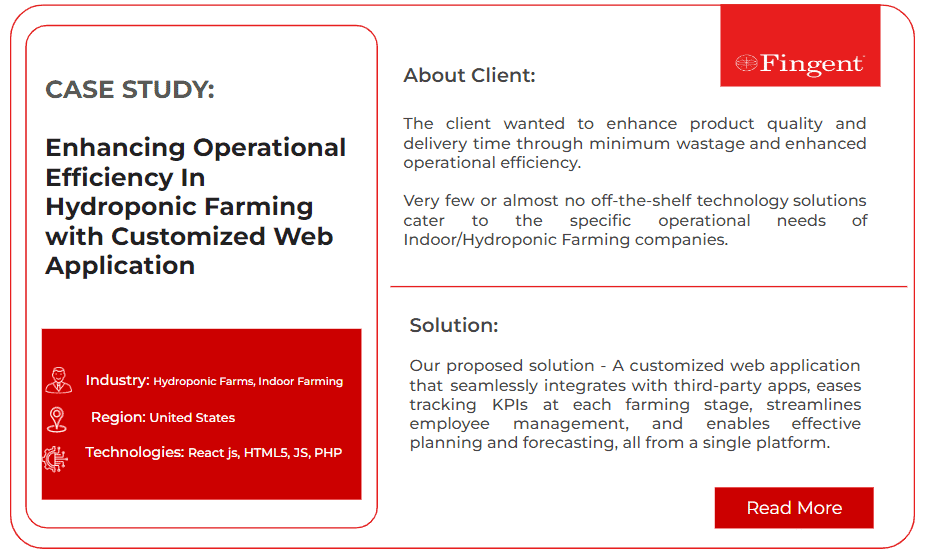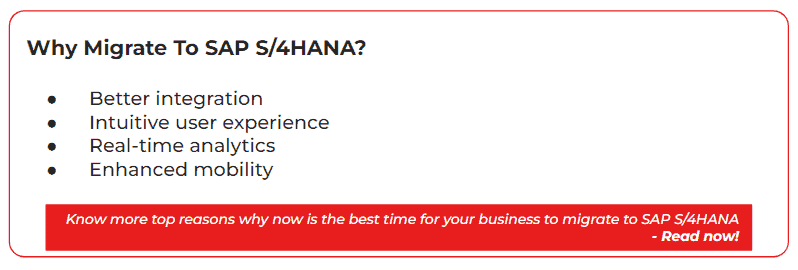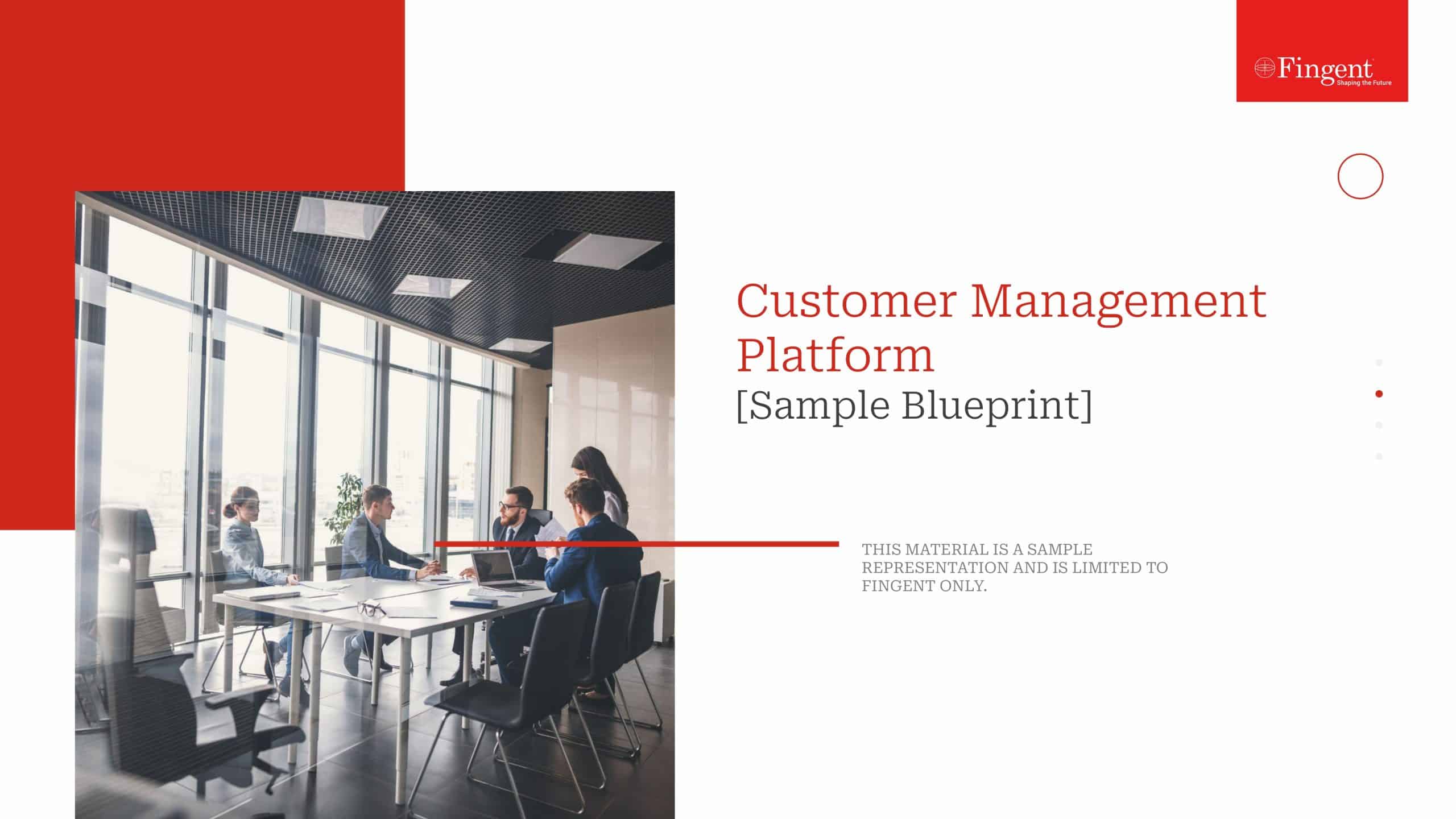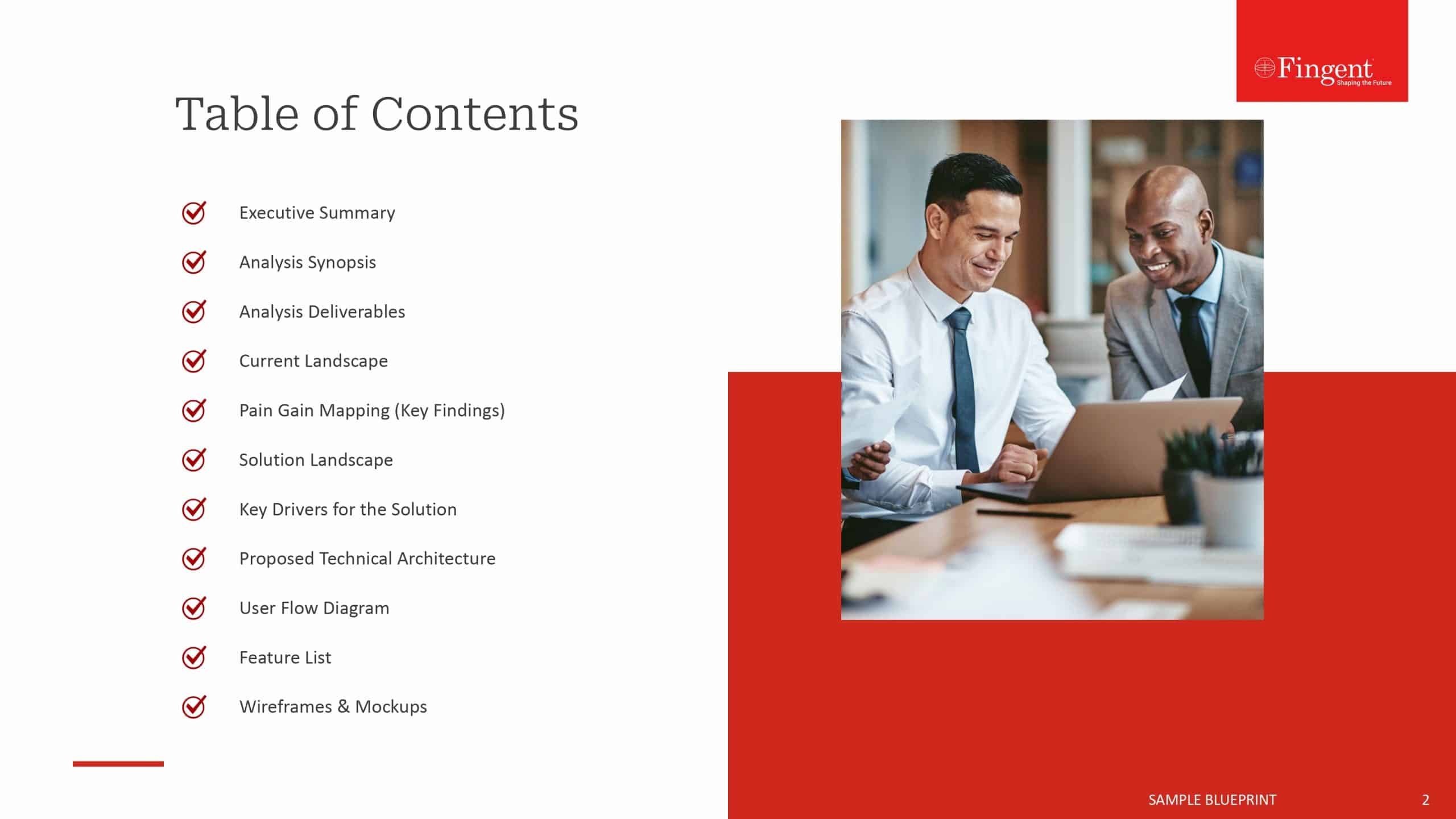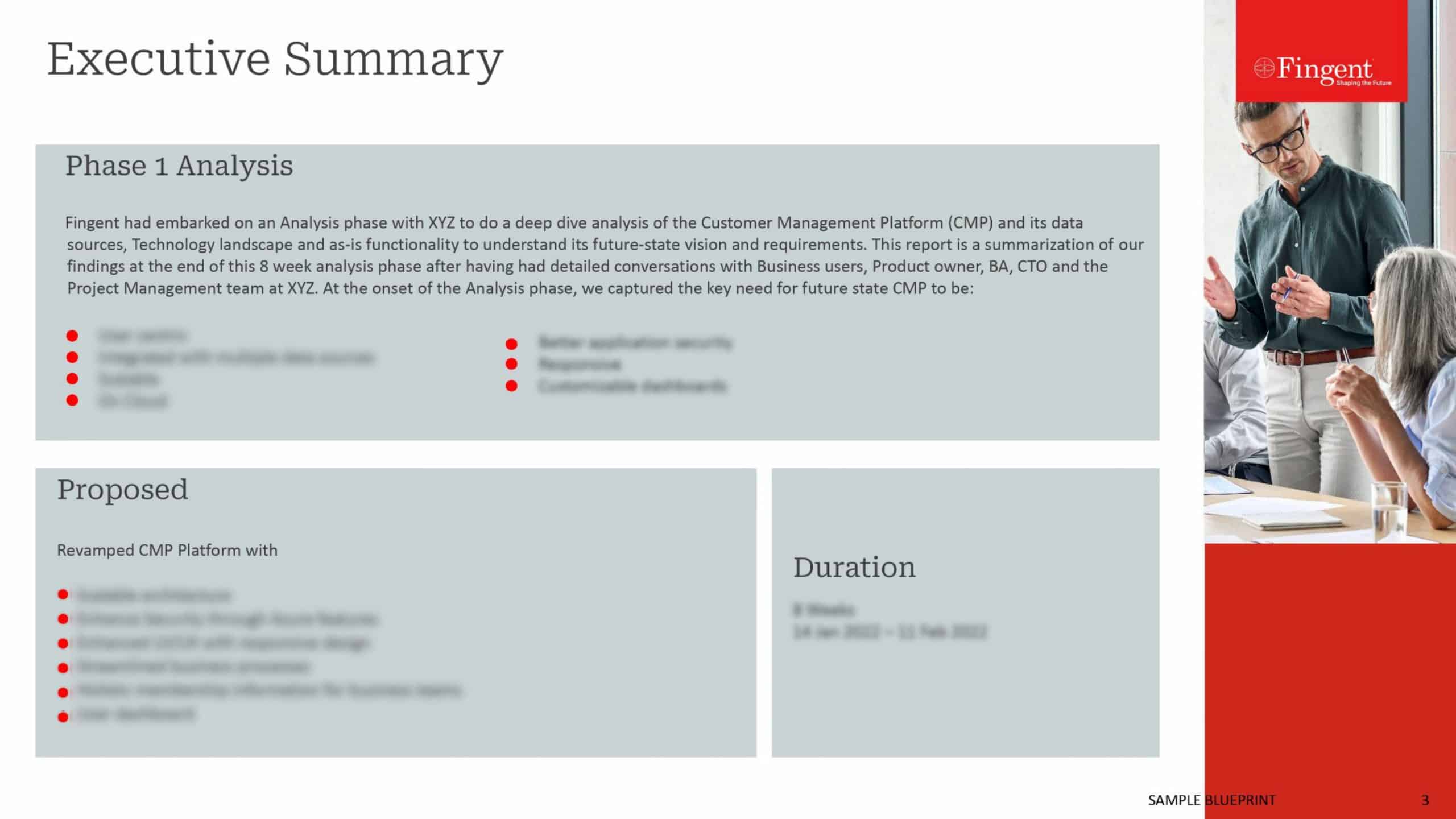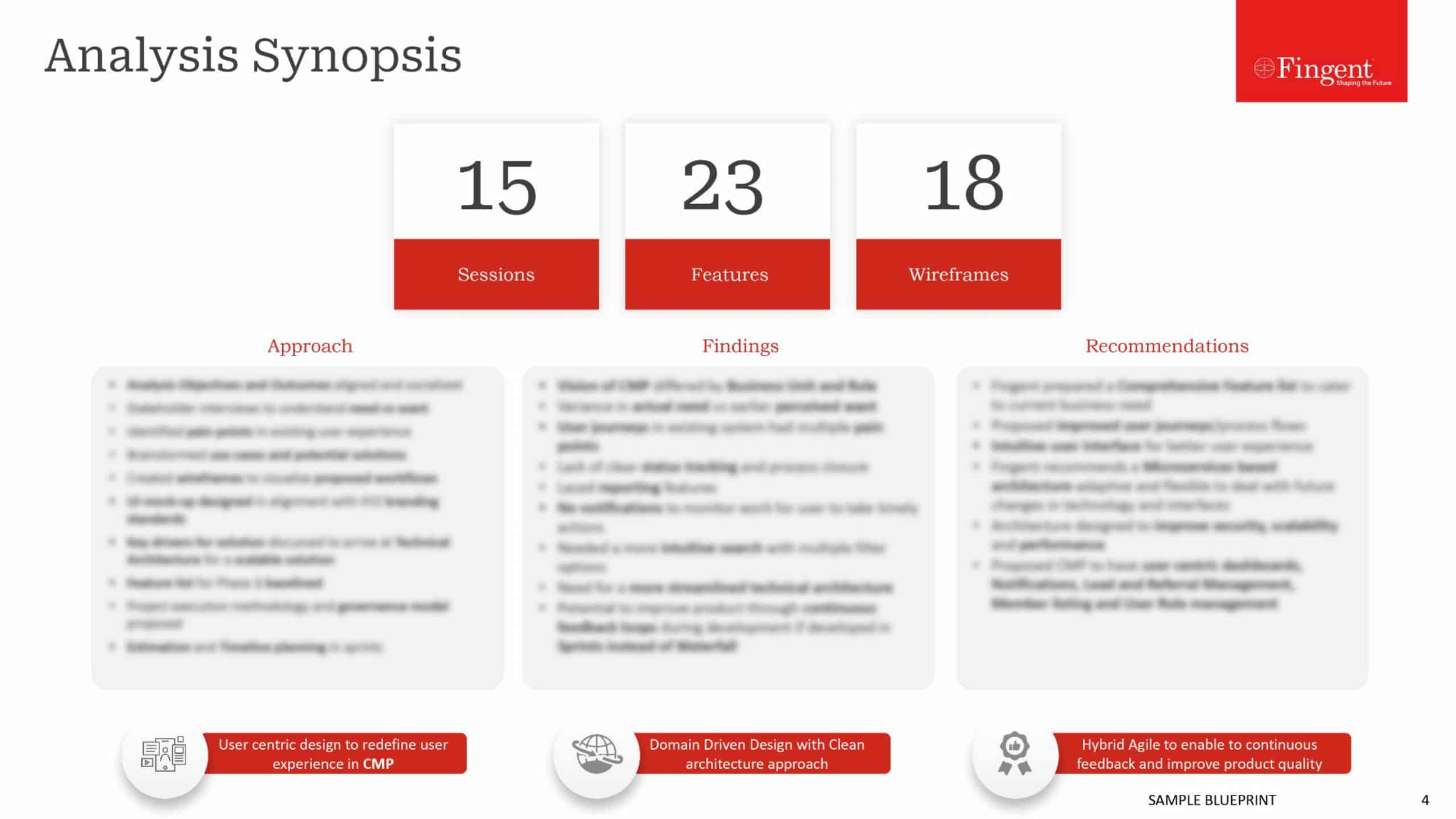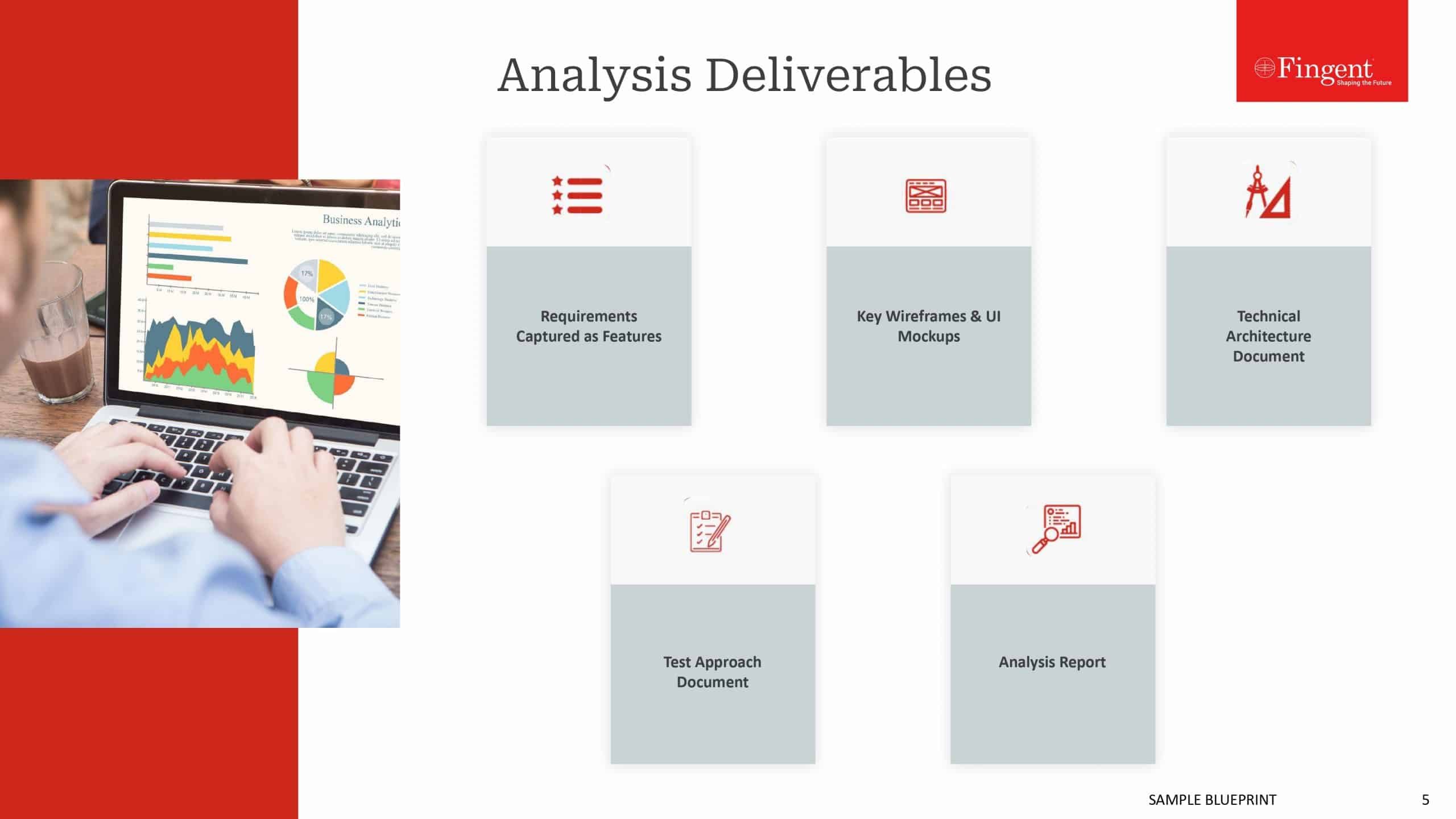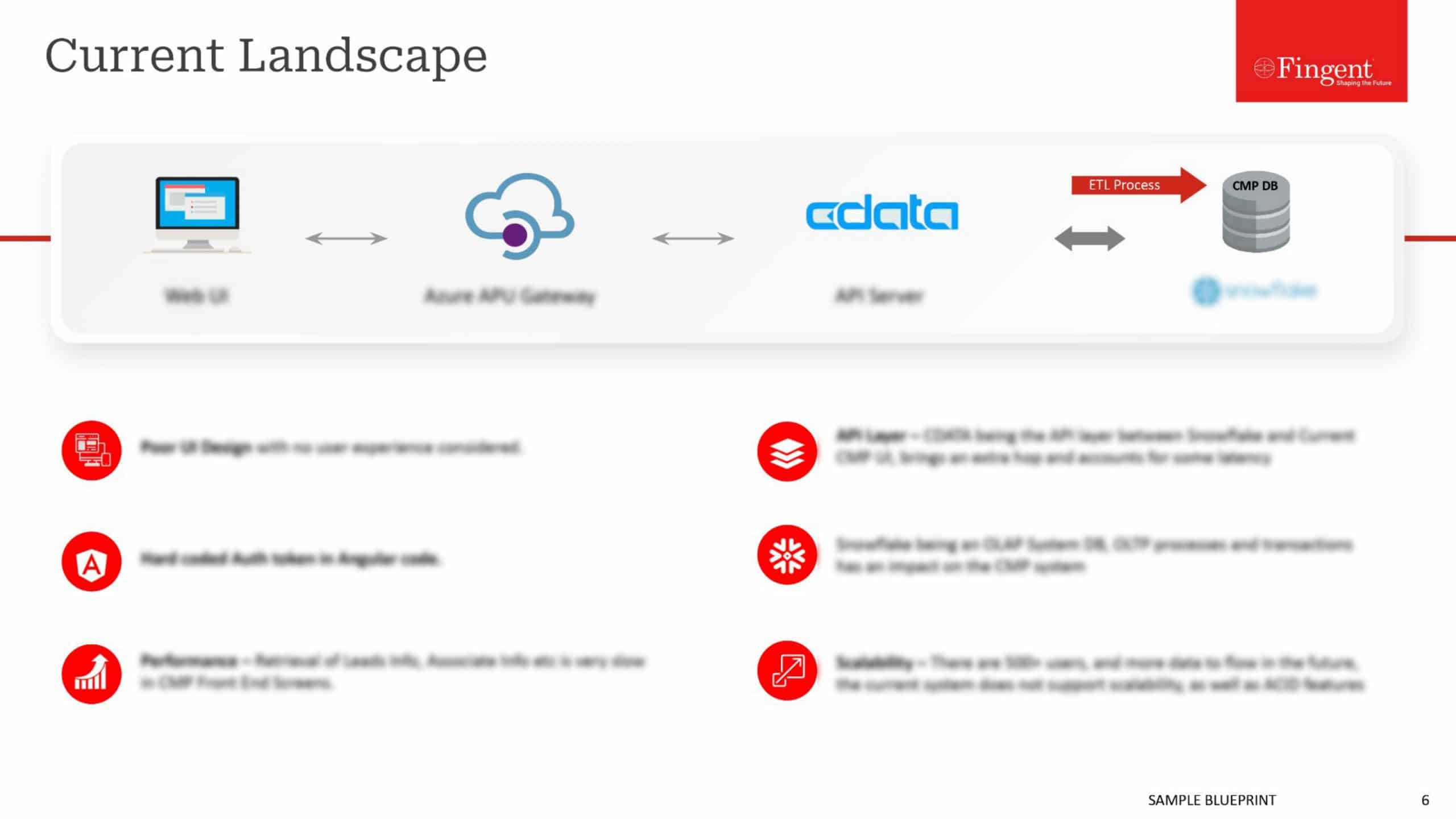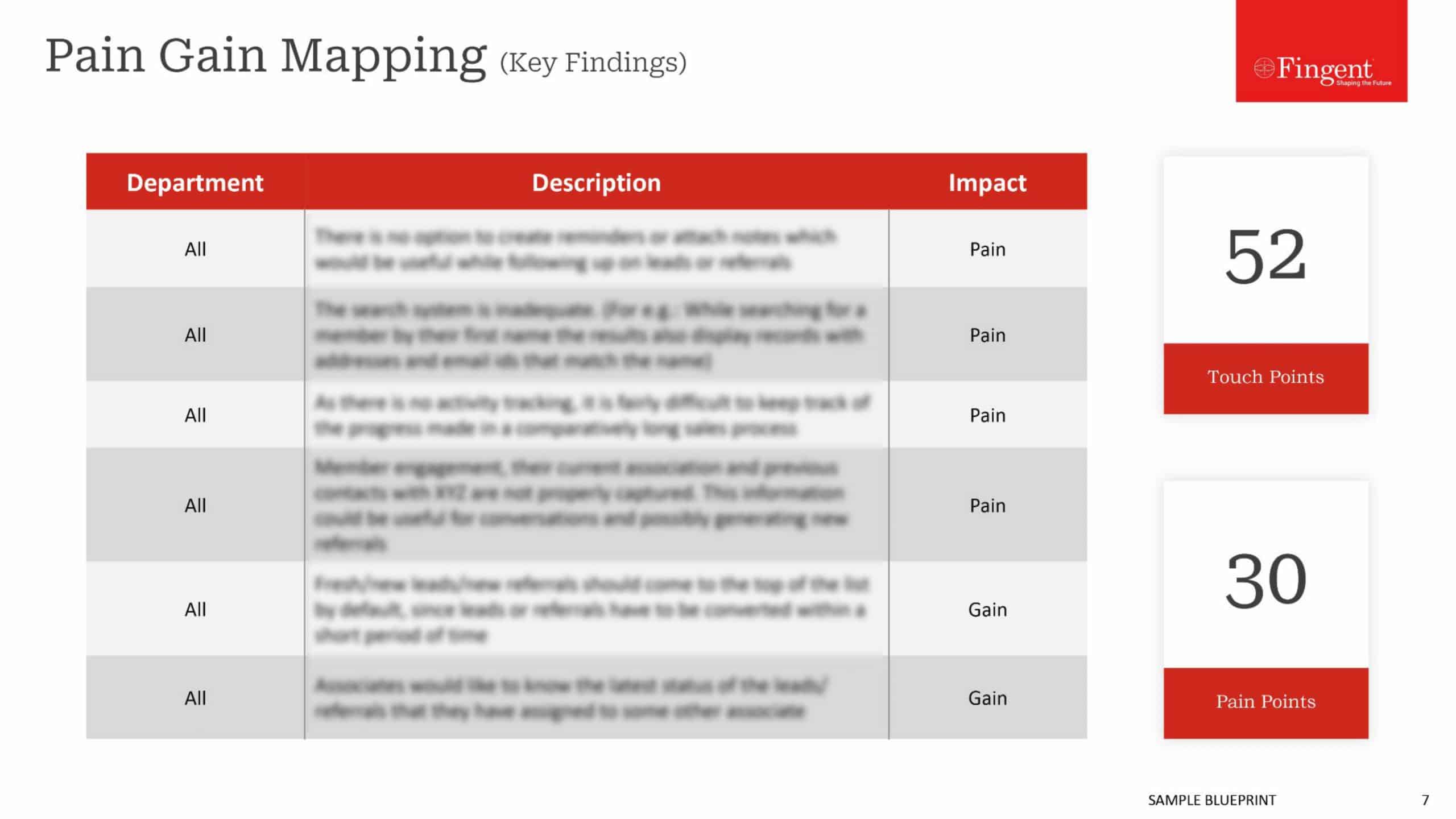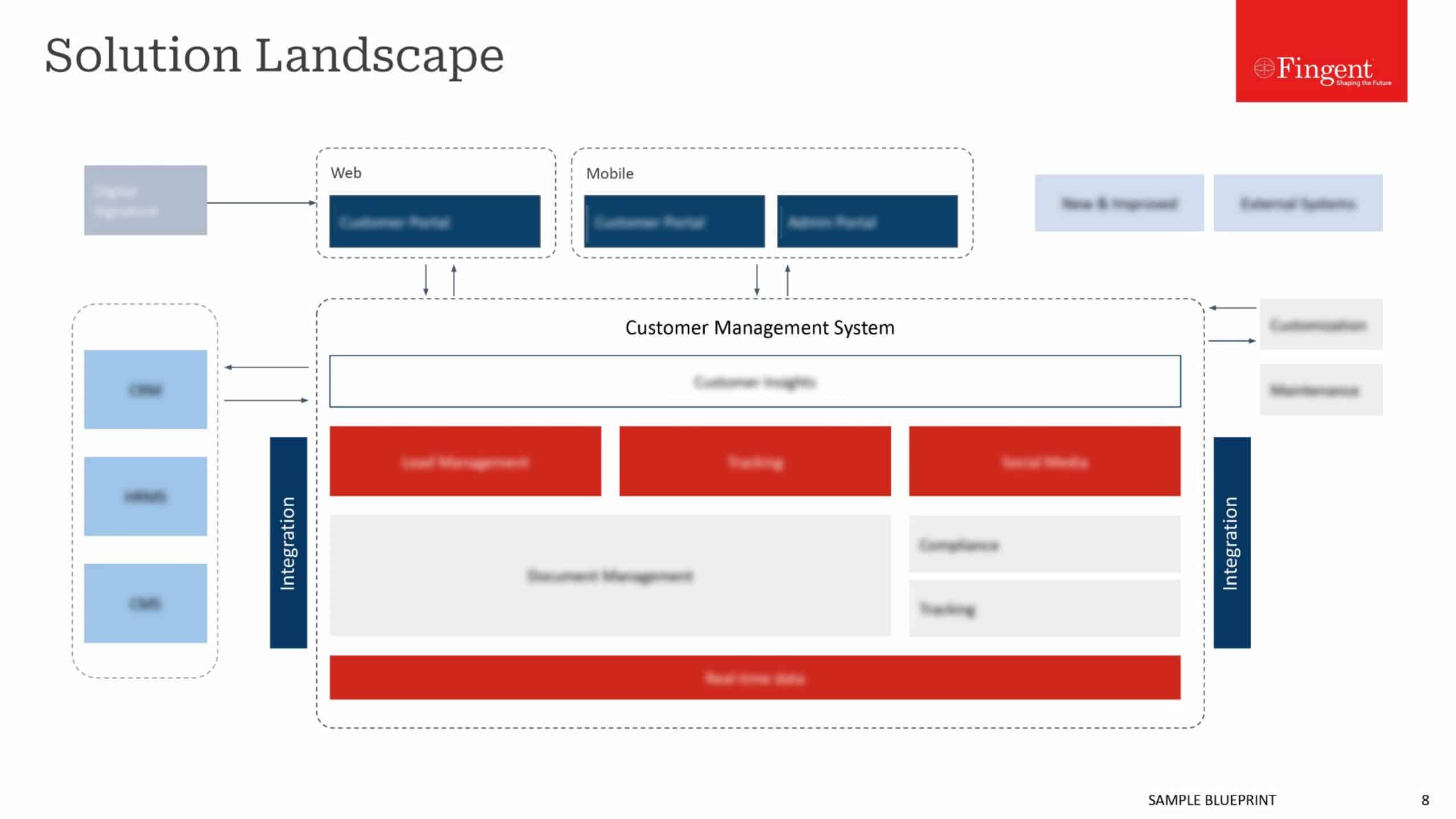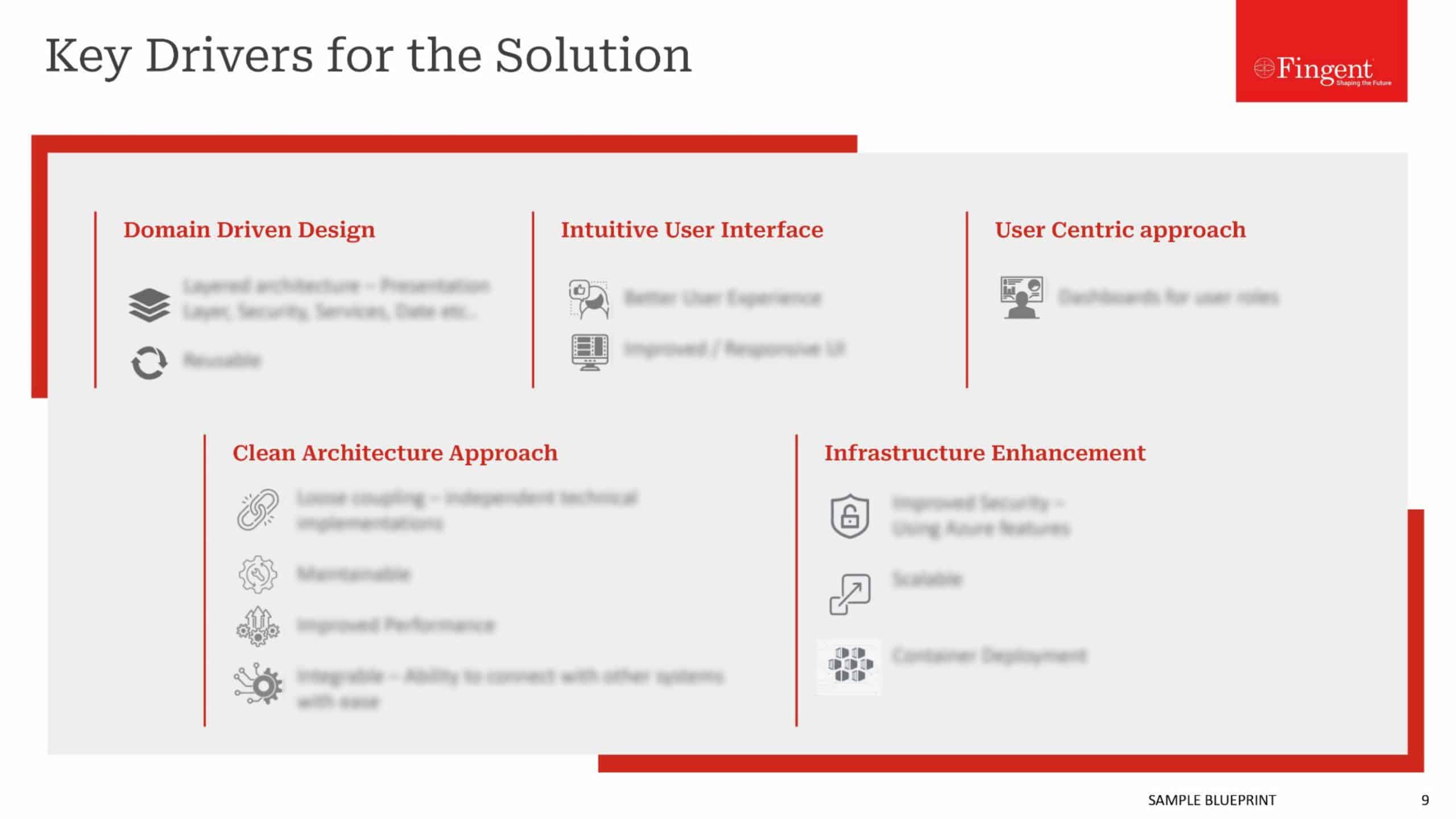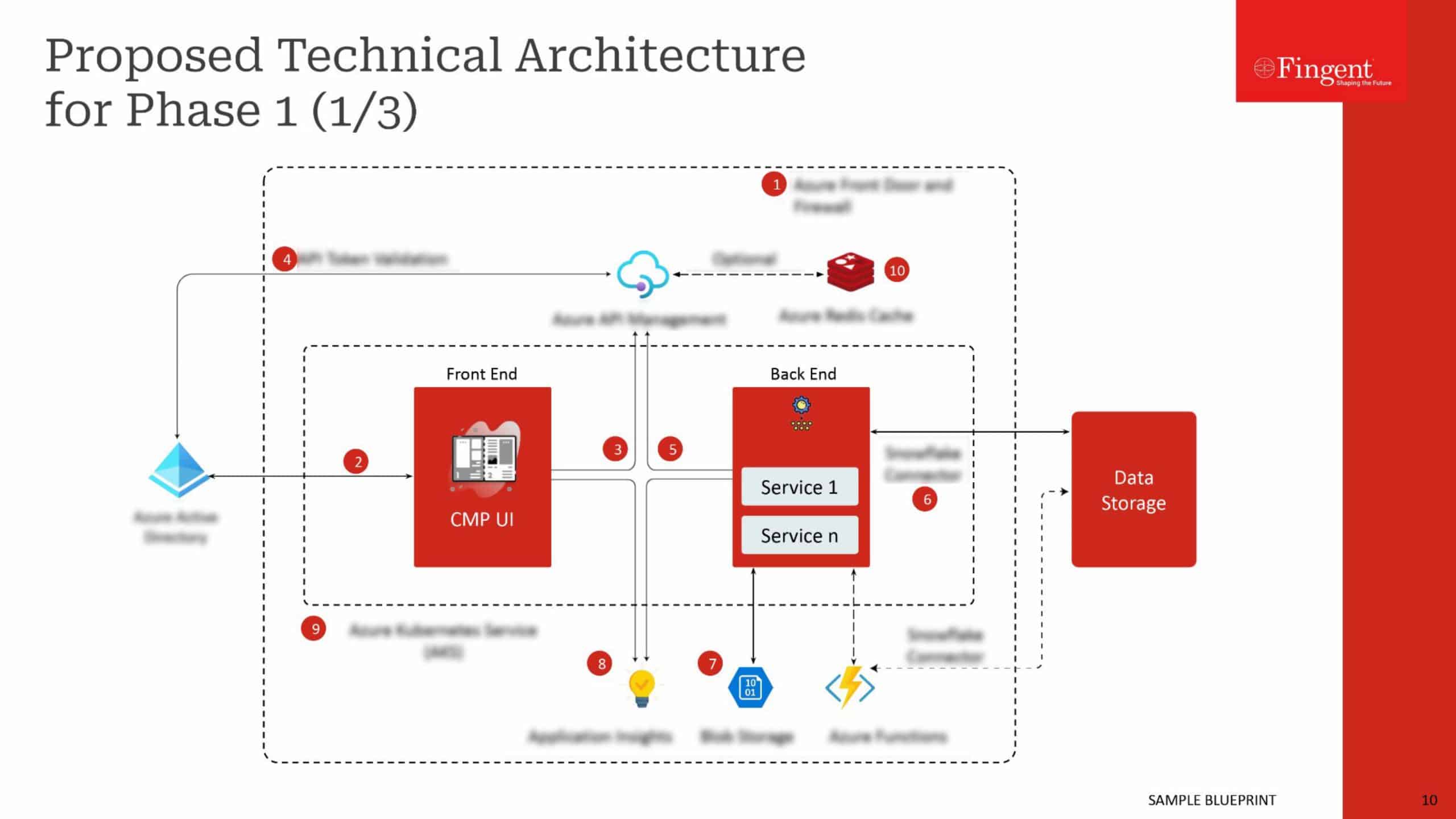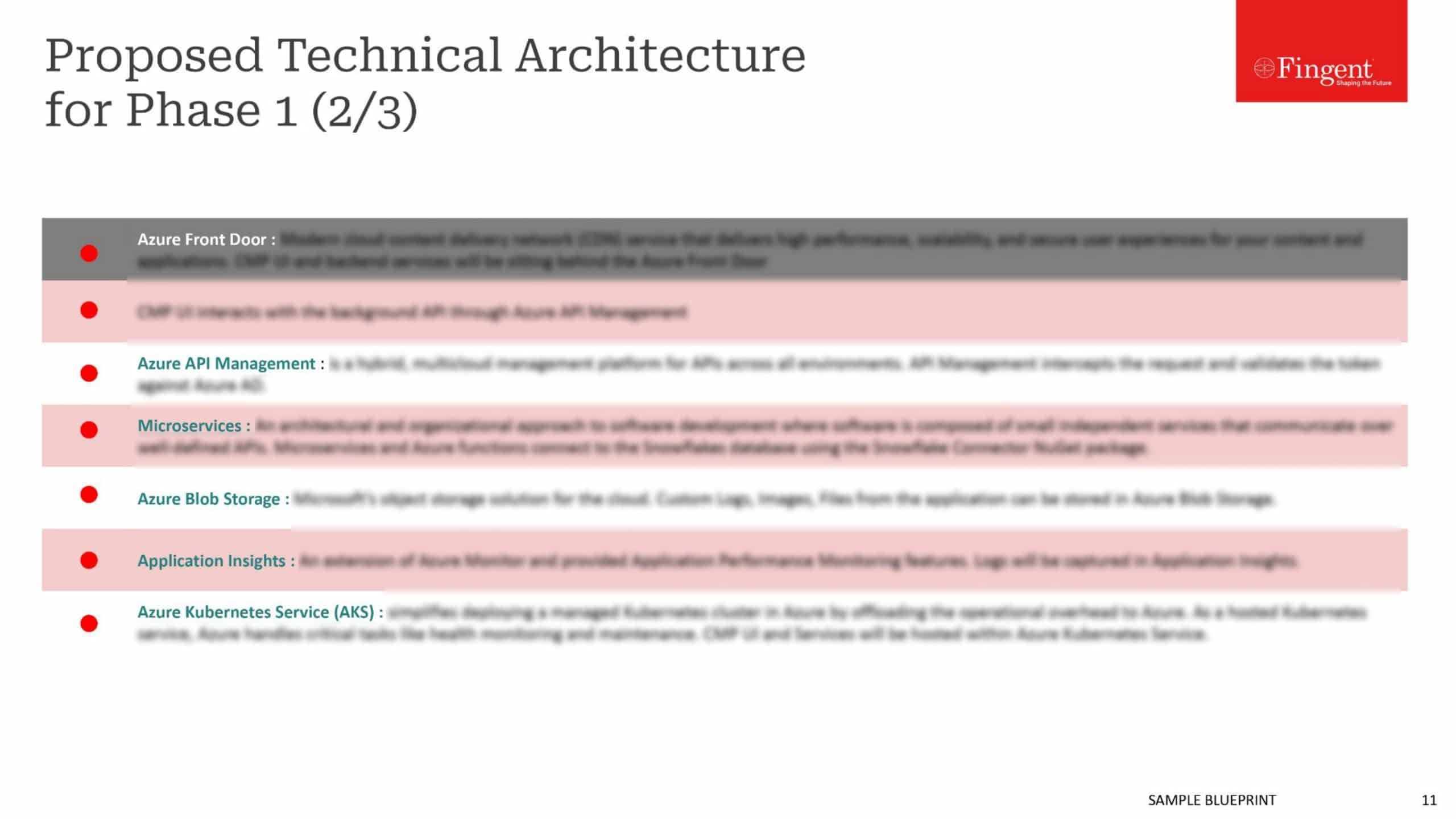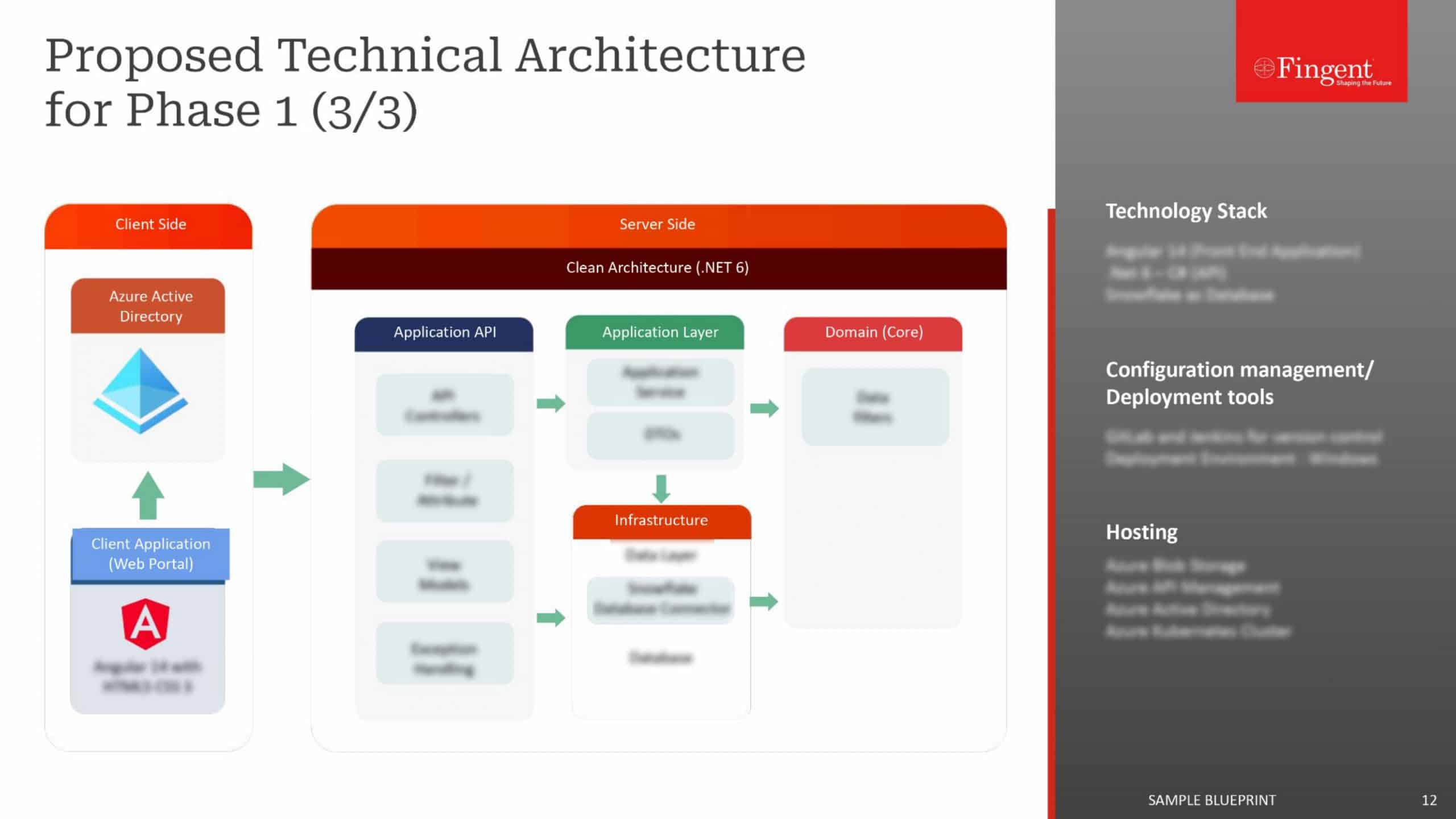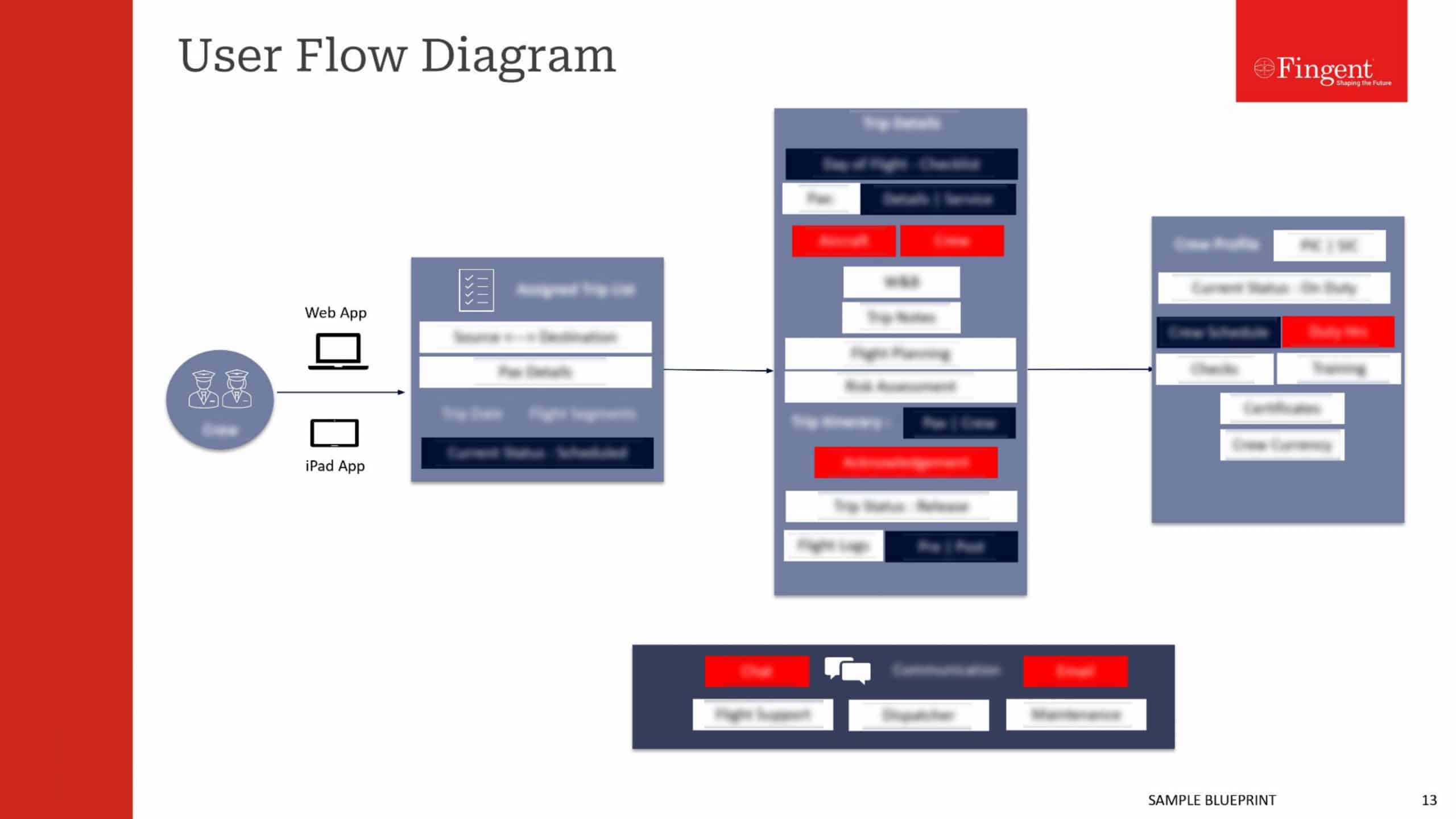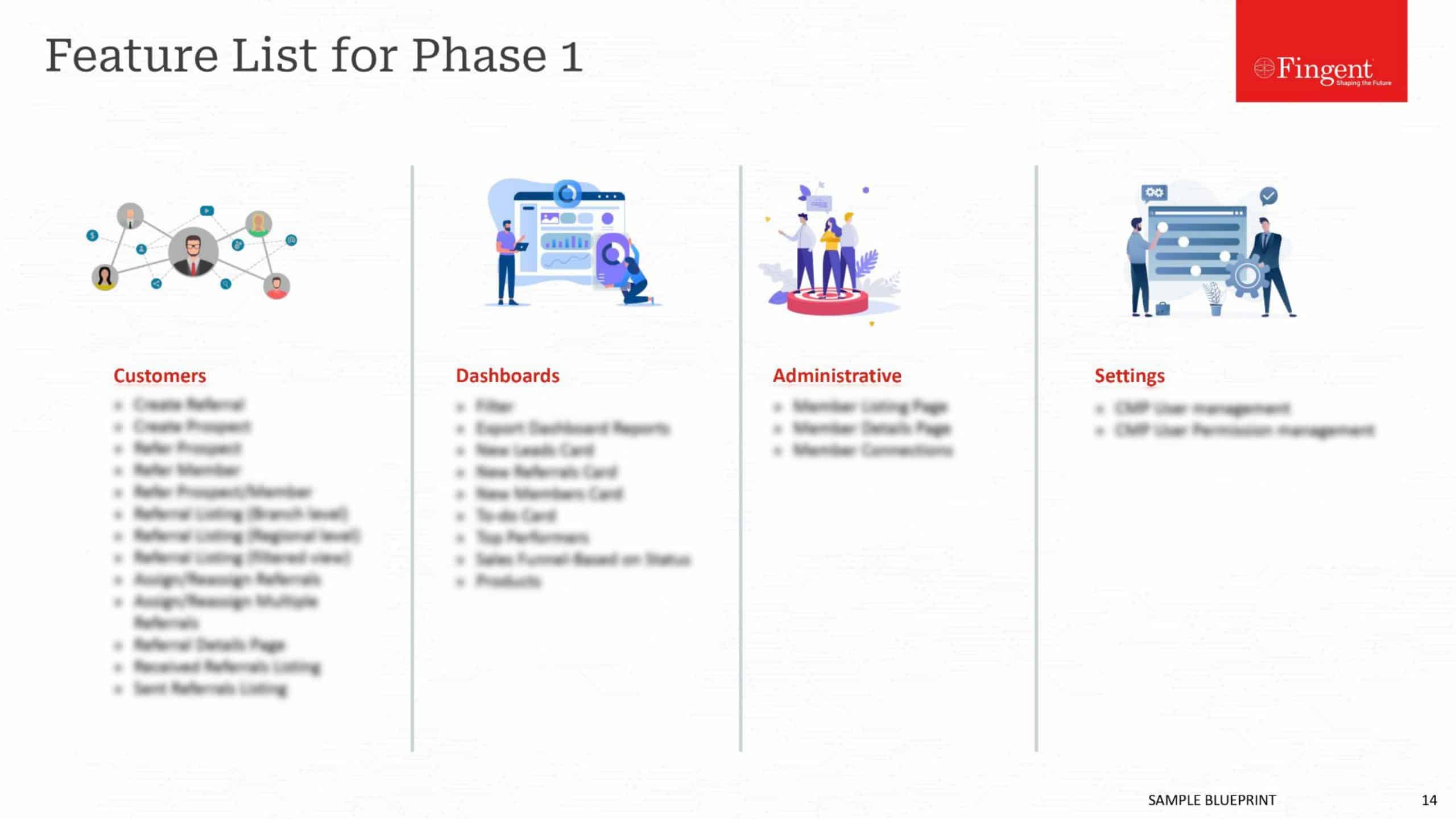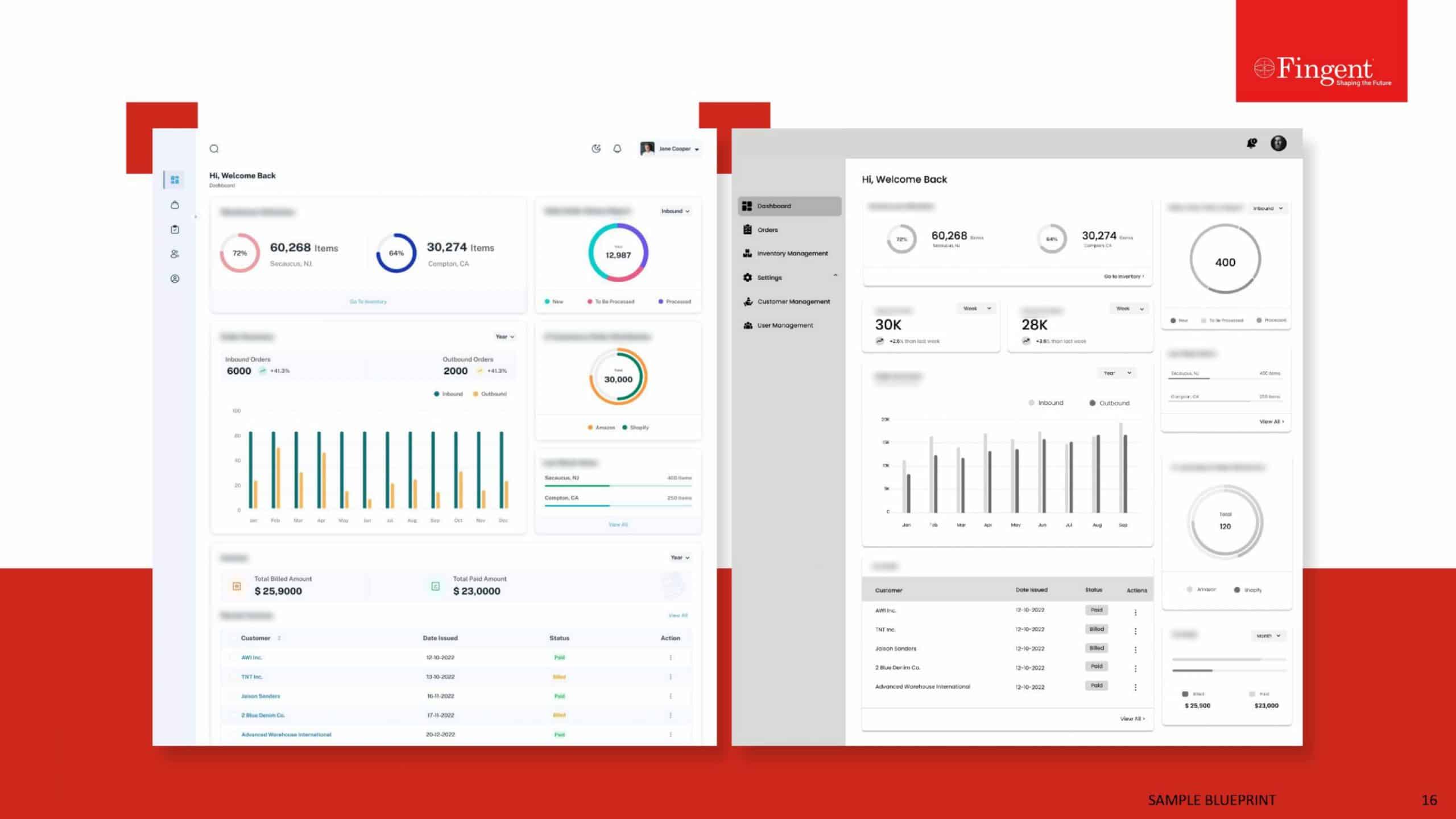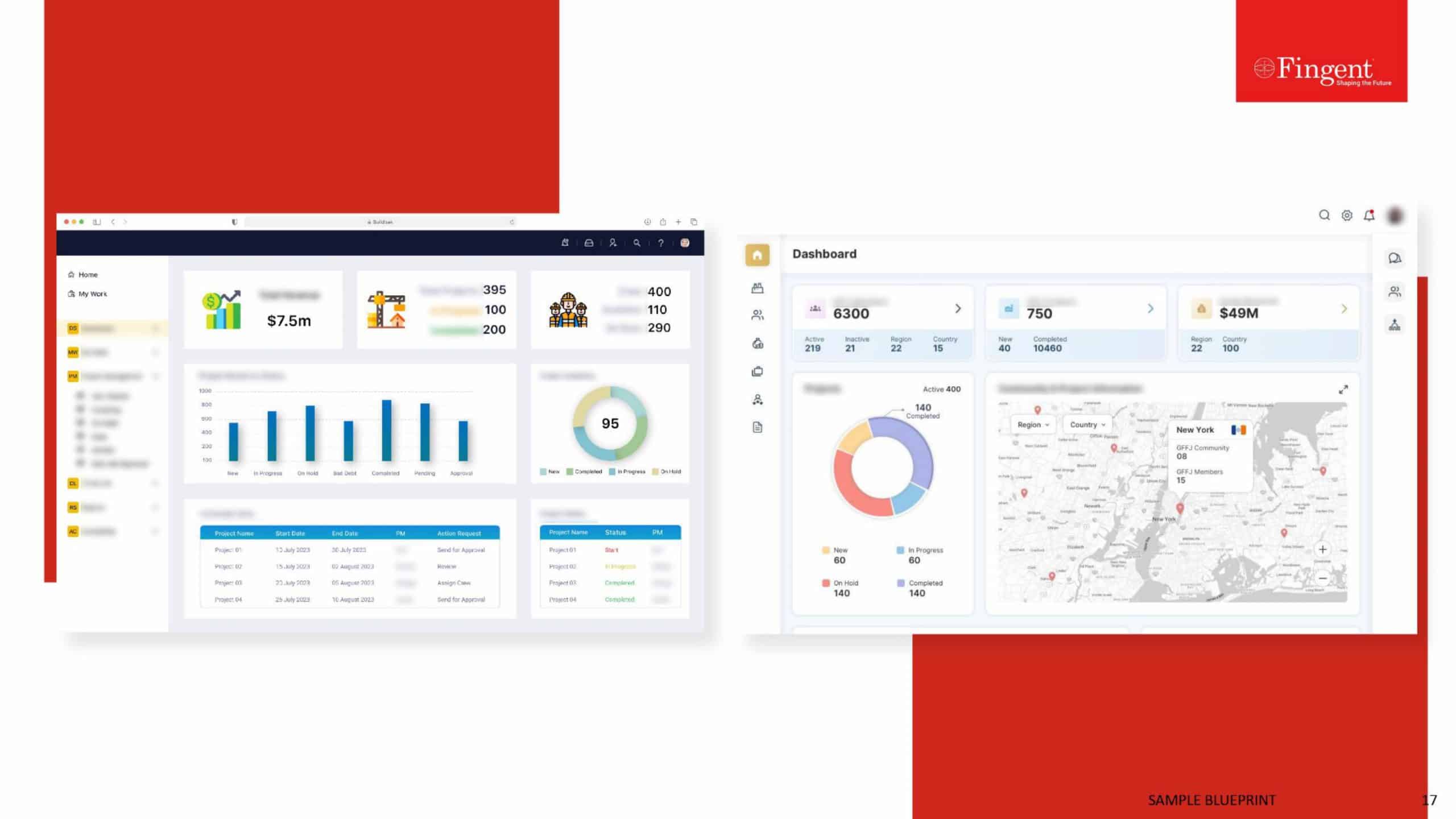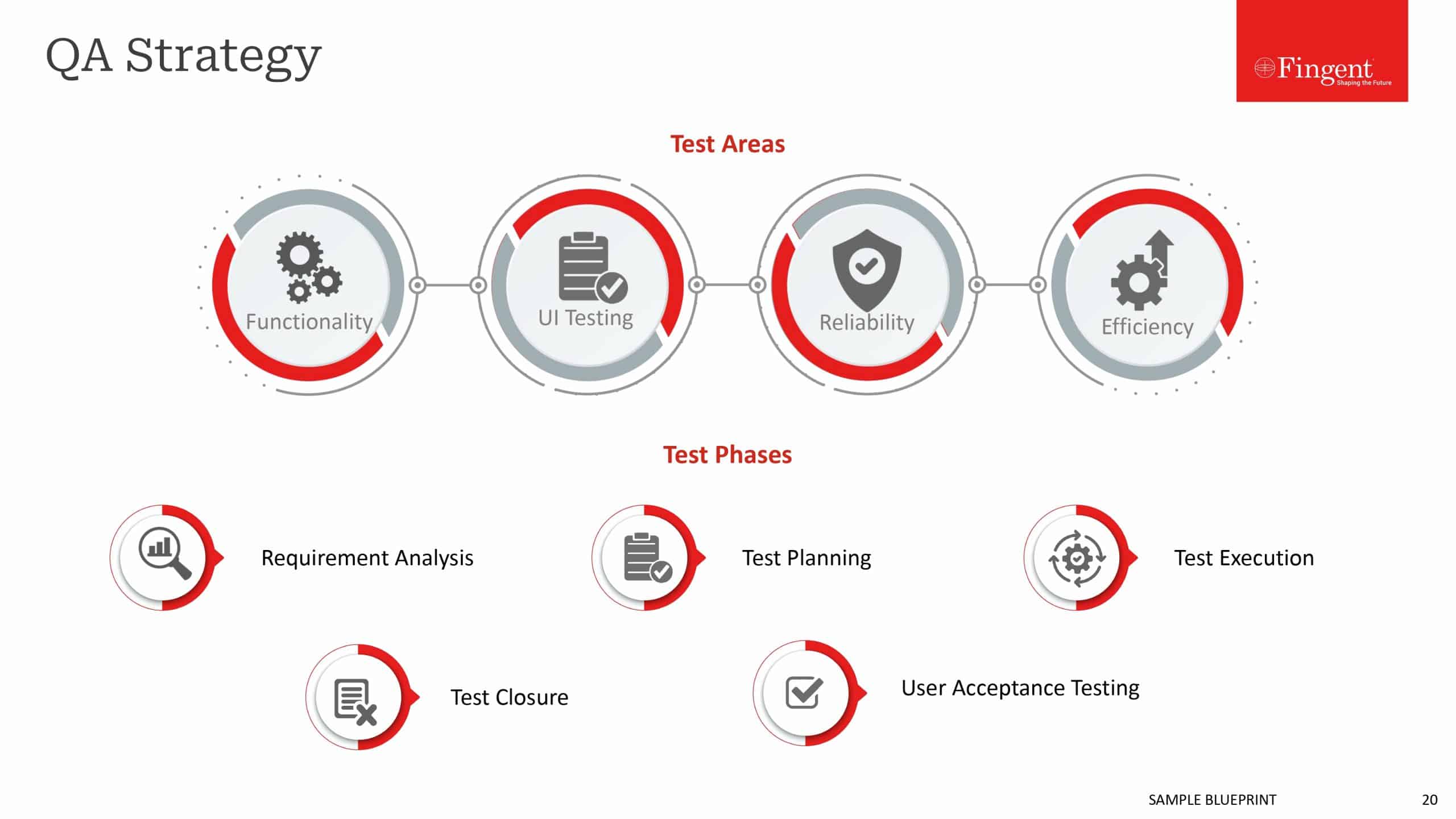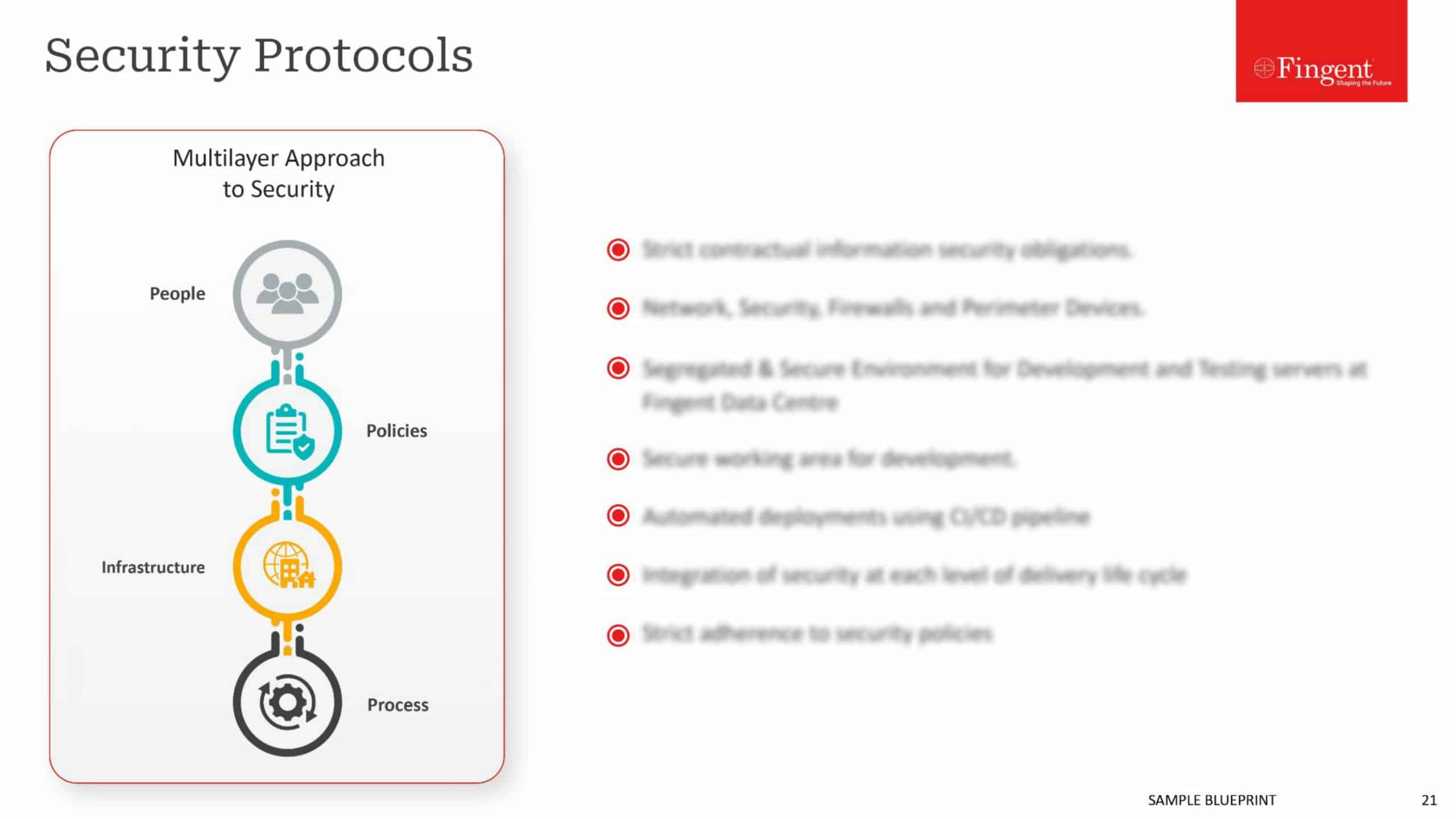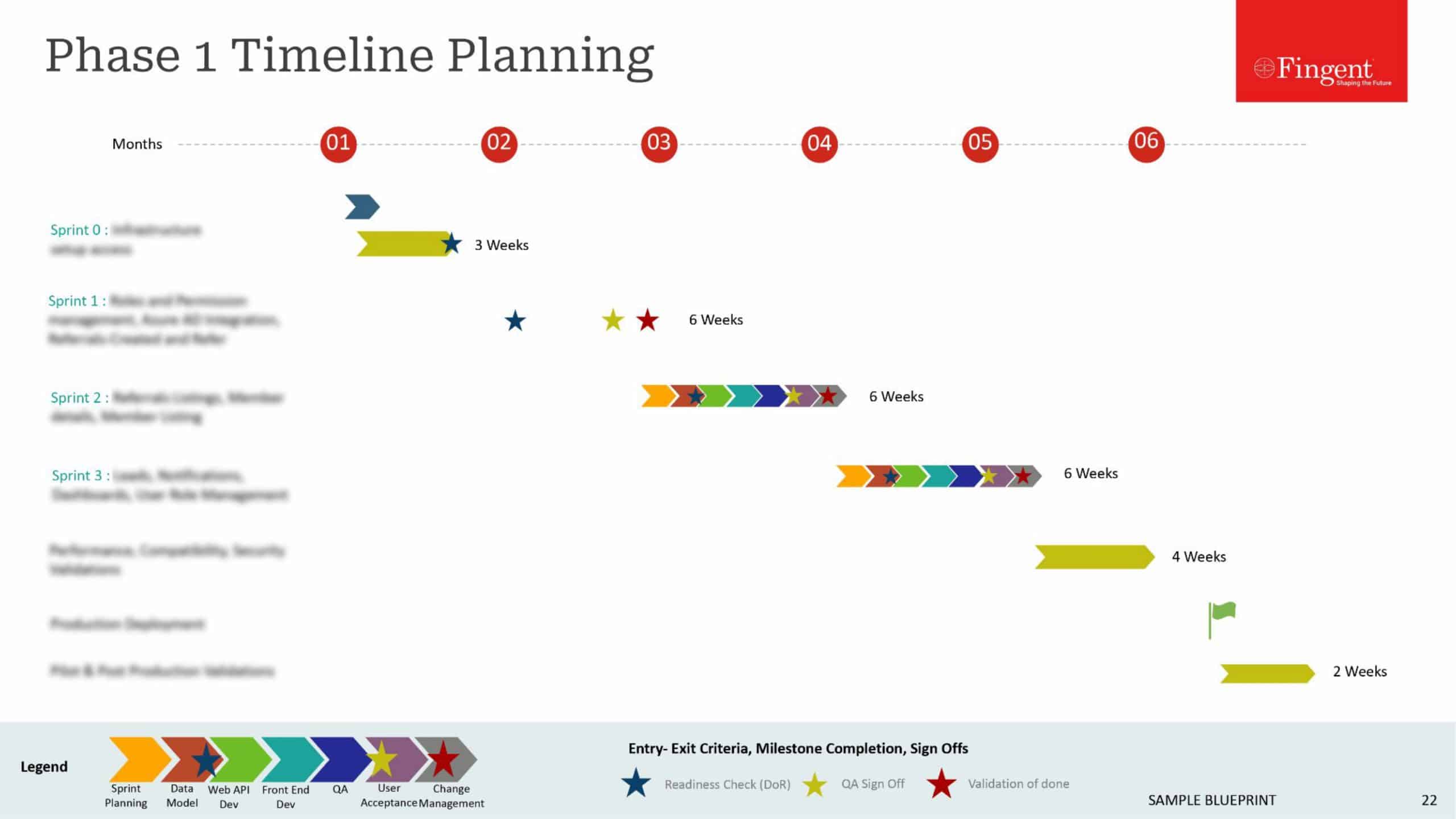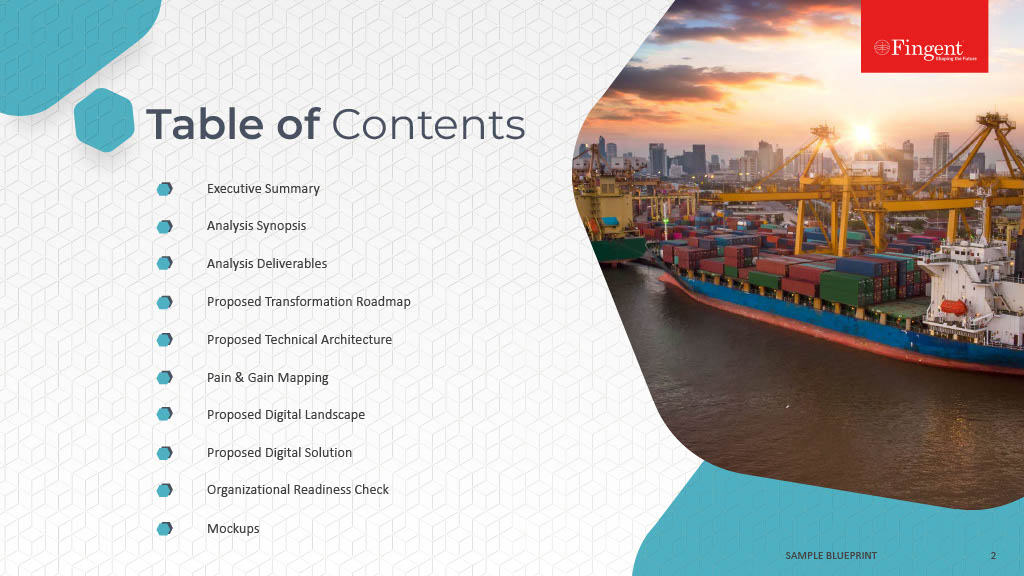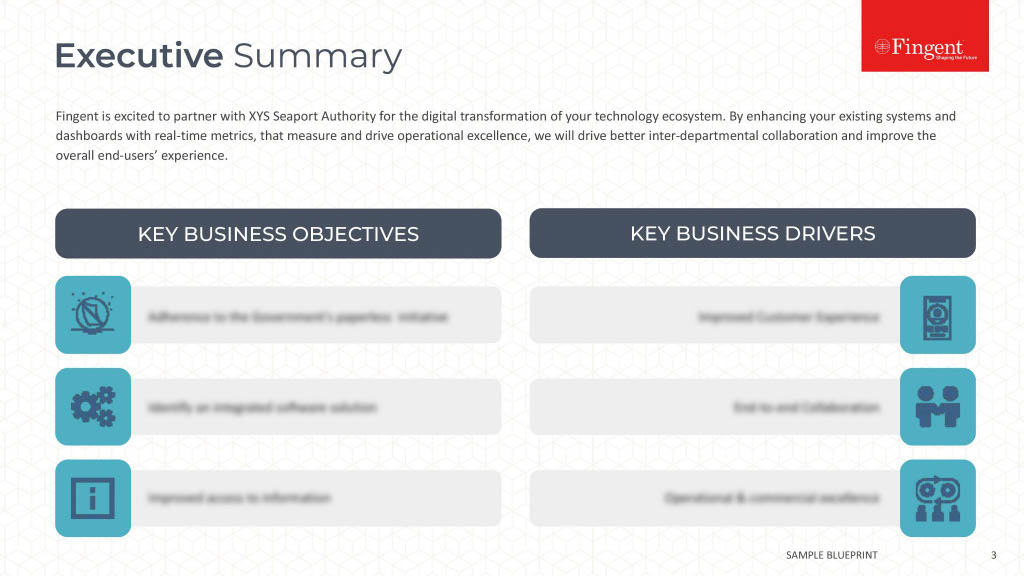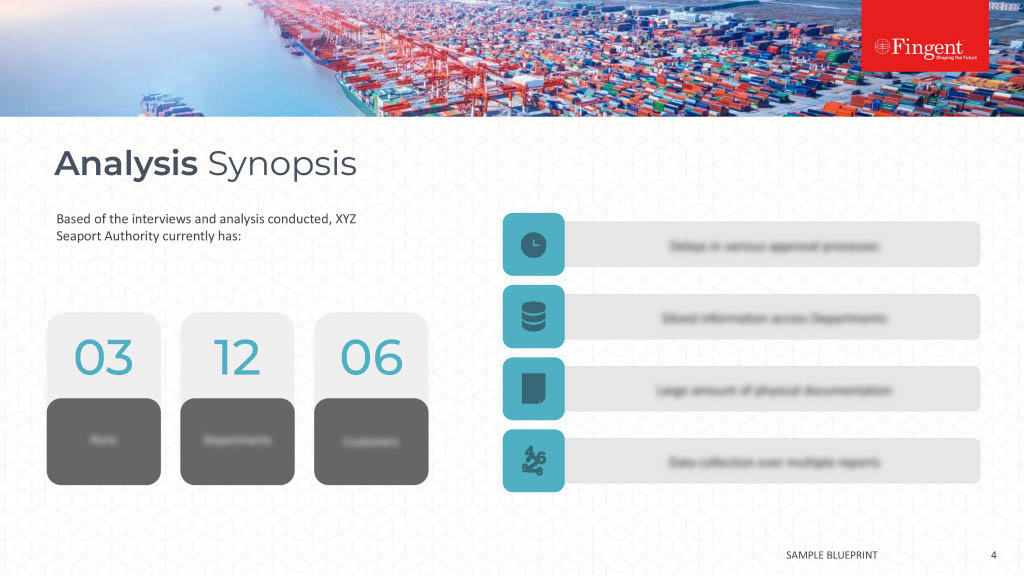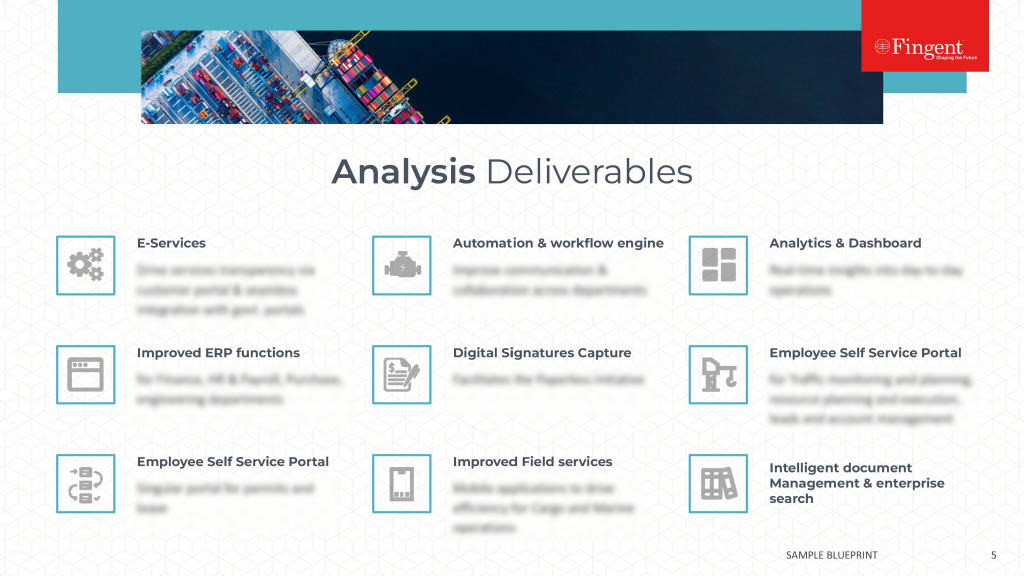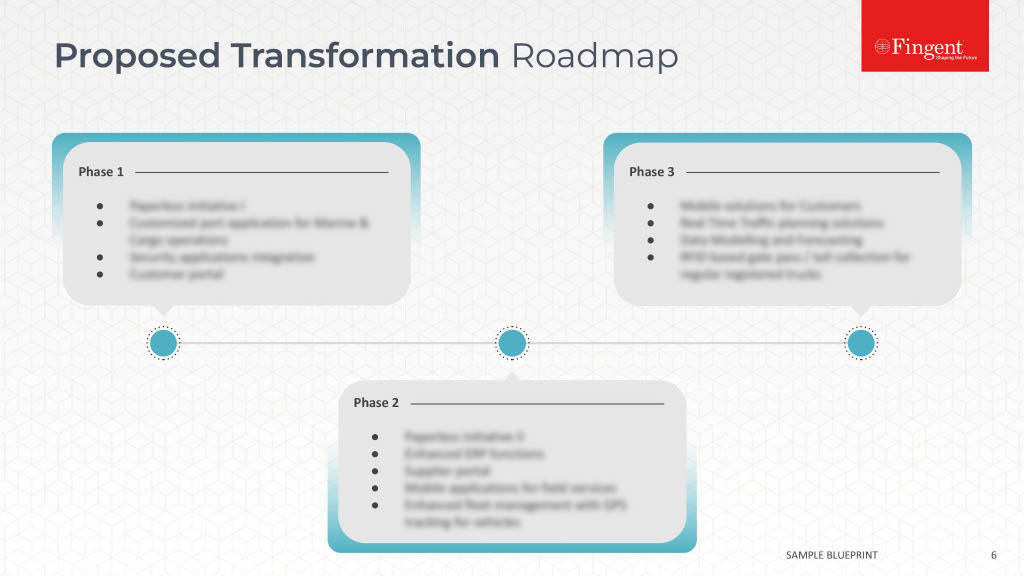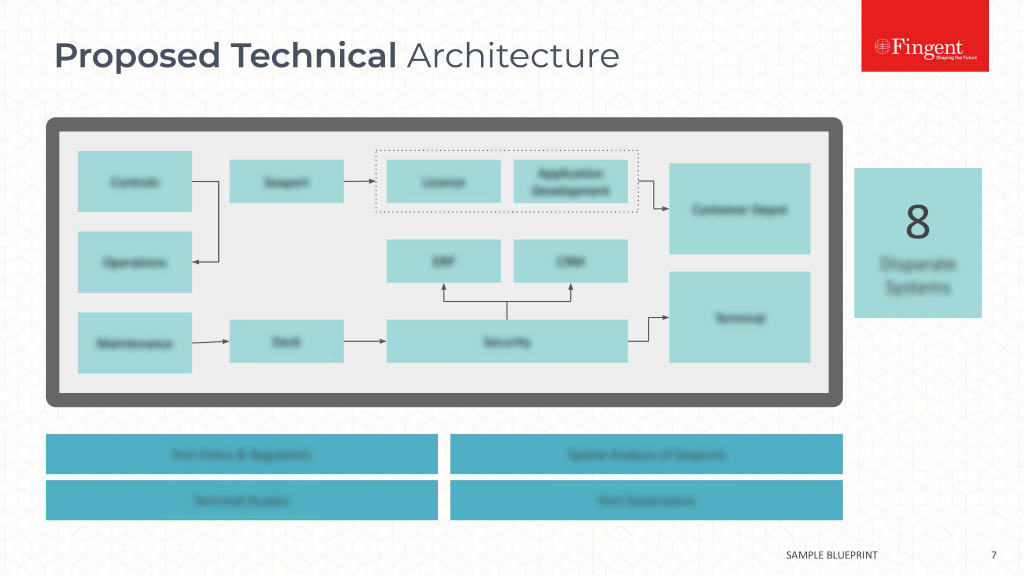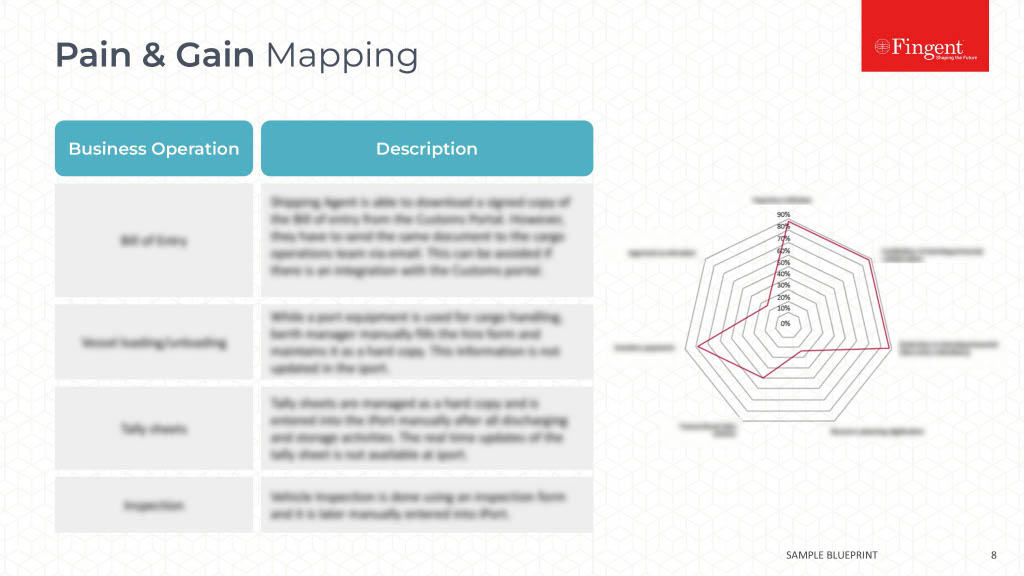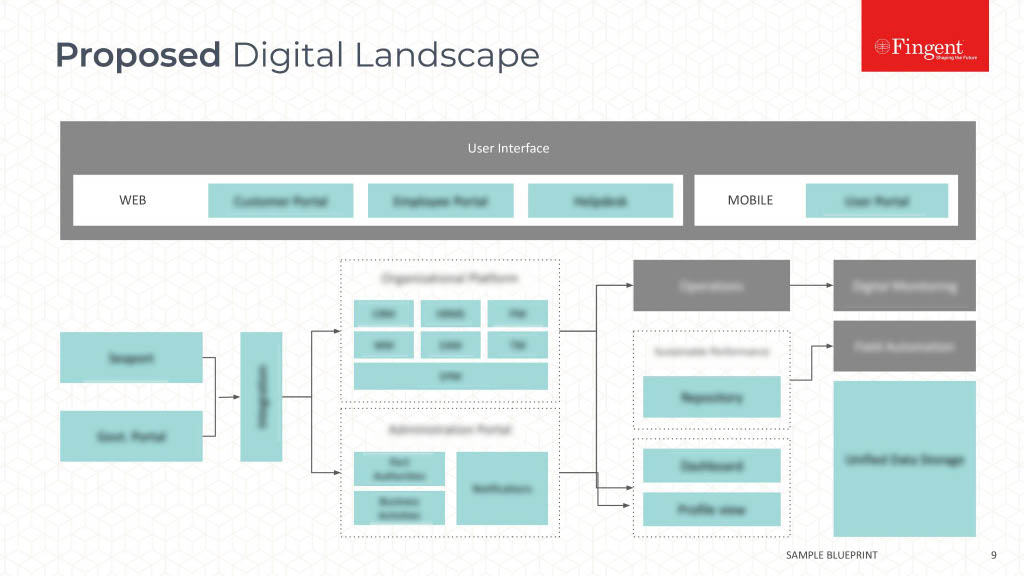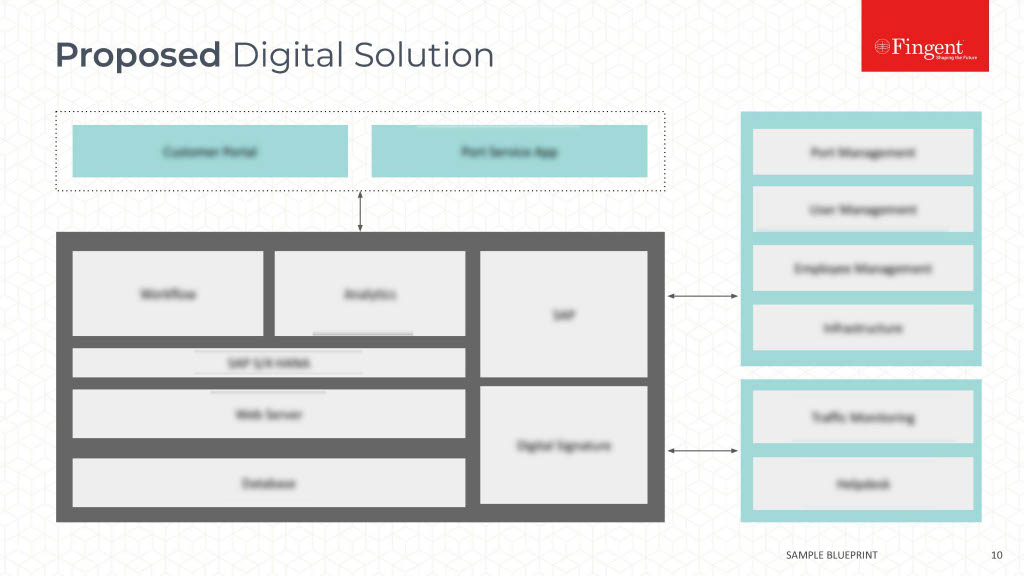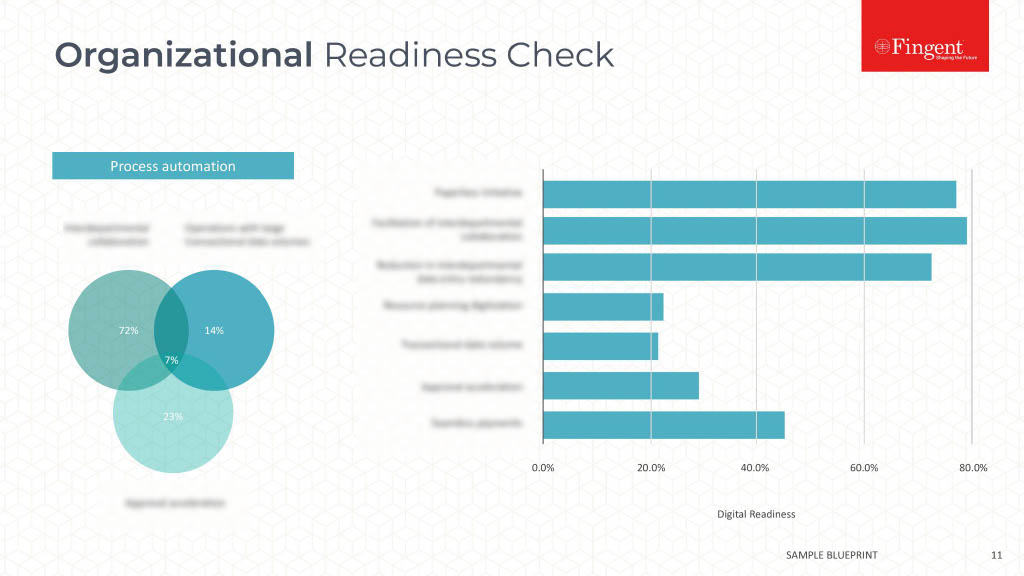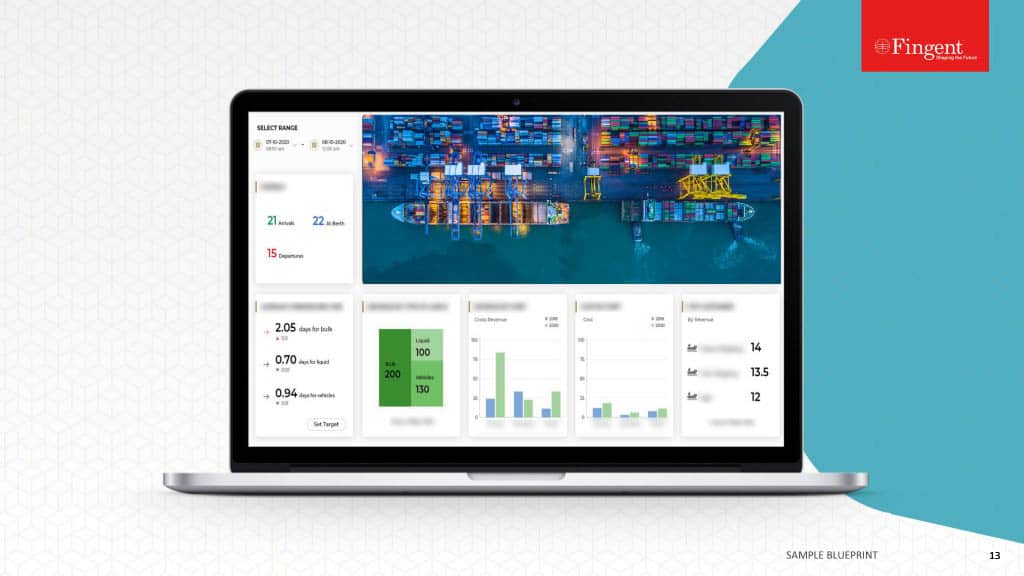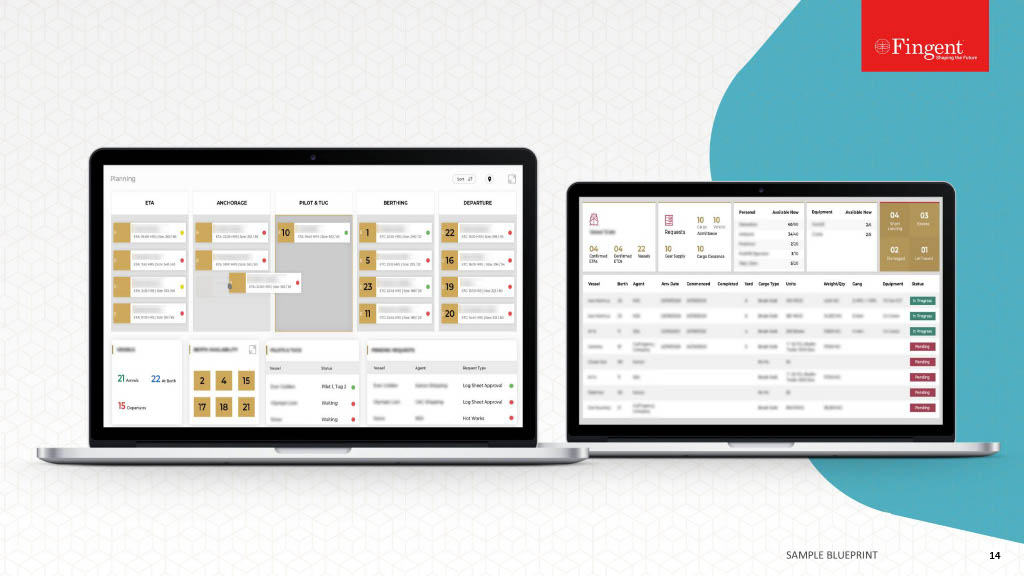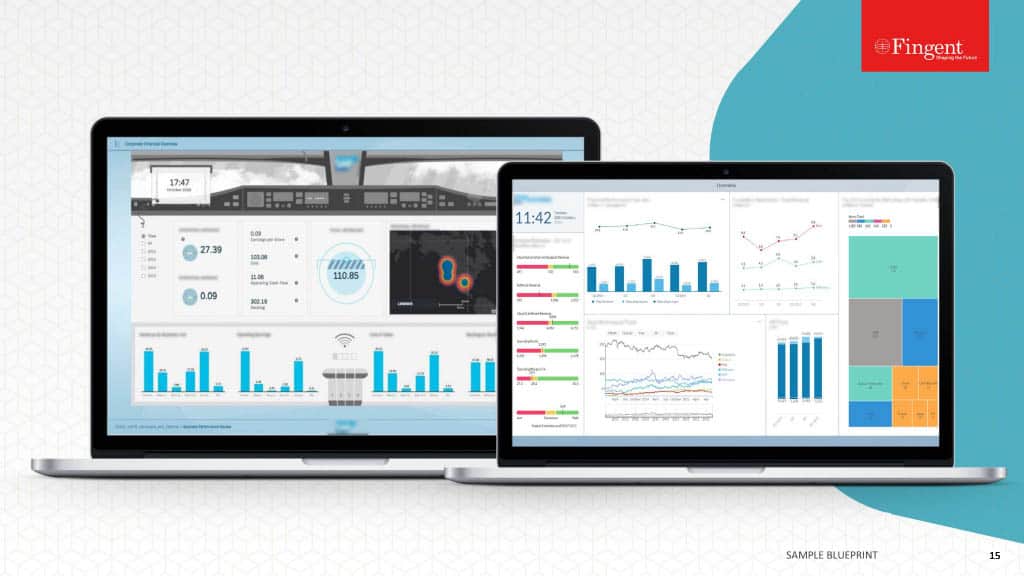Category: Business
It is surprising to see how much technology has evolved and the great impact that Artificial Intelligence has on this dramatic growth. During times of great evolution, it becomes vital to swiftly adapt to the change. Otherwise, you will find yourself lost in a sea of unfamiliarity.
Today, we see the practical application of AI in almost every realm. From solving real-world problems to achieving specific goals, AI is utilized in both general applications and business-specific applications. The rising capabilities of AI are allowing industries to embark on new horizons with quick data analysis and predictions, automated processes, improved efficiency, personalized experiences, and enhanced decision-making skills. And with Applied AI, these opportunities widen further. Applied AI leverages both software applications and machine learning to deliver high value in addressing practical challenges.
“I am telling you, the world’s first ‘trillionaires’ are going to come from somebody who masters AI and all its derivatives and applies it in ways we never thought of.” – Mark Cuban.
This blog will guide you through the business benefits of utilizing Applied AI.
What Is Artificial Intelligence?
Before we dive into what Applied Artificial Intelligence is and how it can help businesses prosper, let us first familiarize ourselves with AI.
Artificial intelligence (AI), a broad field of computer science, aims to create intelligent machines that can carry out tasks that normally call for human cognition.
Today, AI technology is used on approximately 77% of devices!
Artificial Intelligence is bringing about a paradigm shift in almost every area of the tech industry using a variety of techniques, particularly with regard to advances in machine learning and deep learning. It is having a growing impact on all industries, including healthcare, automotive, agriculture, hospitality, manufacturing, and education. Organizations are using this technology to become more efficient, cut expenses, enhance customer satisfaction, raise sales, and obtain a competitive edge in the market.
What Is Applied Artificial Intelligence?
Now that we have a base-level understanding of Artificial Intelligence let’s explore the world of Applied Artificial Intelligence.
Artificial intelligence (AI) that is applied to real-world situations allows computers and robots with computer control to perform activities that are currently only possible in lab settings. Advanced information processing, or “applied AI,” tries to create commercially viable “smart” systems, such as stock trading and “expert” medical diagnosis systems. In addition to changing how we interact with everything around us, applied Artificial Intelligence is contextualizing business models and industry processes.
As more companies begin to realize the potential of applied Artificial Intelligence, it’s becoming apparent that this is the way of the future. Applied artificial intelligence (AI) is quickly rising to the top of the global technology demand curve due to its capacity to automate mundane tasks, lower operating costs, and produce more robust and accurate data.
By applying AI techniques to solve real-world issues, including deep learning, computer vision, machine learning, and natural language processing (NLP), Applied AI systems function in actual settings and do jobs that would normally call for human assistance or knowledge. Although this application of Artificial Intelligence is relatively new, it is predicted to segue into routine business functions and dramatically improve them.
Ready To Transform Your Business Operations with AI?
How Is Applied AI Different From Regular Artificial Intelligence Applications?
Applied Artificial Intelligence is the practical application of Artificial Intelligence technologies to solve particular problems or carry out specific tasks, whereas Artificial Intelligence applications refer to specific software programs or systems that make use of AI techniques to perform tasks or functions. Applied AI entails applying AI theories, models, and algorithms to practical situations in order to produce observable results.
In contrast to conventional Artificial Intelligence technology, Applied AI operates well without an extensive amount of data. This makes it more accurate and efficient since it can operate with less data. Additionally, the AI can adjust without the need for manual coding or a protracted learning curve.
Moreover, applied AI is distinct from other Artificial Intelligence applications in that it integrates deep learning, robotics, computer vision, machine learning, and natural language processing to facilitate automated decision-making. Rather than depending on just one technology, this mix enables the AI to process more data and come to better conclusions. Applied AI is also flexible enough to be utilized in more dynamic scenarios because it can adjust to shifting environments and conditions.
How Can Businesses Benefit From Applied Artificial Intelligence?
Businesses benefit from Applied AI in a variety of ways, including enhanced efficiency and accuracy, cost savings, and better decision-making. According to MIT Sloan statistics on artificial intelligence, 75% of senior executives think that AI will help their company expand and gain a competitive advantage. Here are some of the primary advantages of Applied AI:
- Decisions Made Quickly: Applied AI reduces errors and predicts outcomes by allowing computers to make “human-like” decisions. This results in enhanced smart device systems and end-to-end process automation.
- Human Touch In Technology: Applied AI reduces the effects of human bias, model mistakes, and ethical issues by fusing computer power with a human touch.
- Enhanced Productivity And Efficiency: Applied AI saves time and money by increasing productivity and efficiency.
- Automation: It increases production by automating laborious procedures, freeing up workers for more important work.
- Increased Revenue: By using machine learning and adaptability, applied artificial intelligence (AI) can detect and resolve complicated business problems, enhancing profitability.
Know The AI Trends Transforming Businesses In 2024
Applications Of Applied AI
Global business executives agree that Artificial Intelligence and Machine Learning are the main forces behind the Industry 4.0 revolution. Artificial intelligence has been estimated to increase global GDP by 14%, or 15.7 trillion dollars, by 2030.
Let’s delve deeper into specific use cases of Applied AI within various industries to highlight its practical applications:
1. Medical Care
- Disease Prediction and Prevention: Artificial Intelligence algorithms are able to evaluate patient data and forecast the chance of developing conditions like cardiac disease or diabetes. This allows for proactive preventative treatments.
- Remote Patient Monitoring: AI-enabled gadgets can keep an eye on patients’ health from a distance and notify medical professionals of any irregularities.
2. Finance
- Robo-Advisors: AI-powered robo-advisors offer individualized investment guidance according to each client’s financial objectives and risk tolerance.
- Fraud Detection and Prevention: Artificial intelligence systems examine transaction patterns to immediately identify and stop fraudulent activity.
3. Retail
- Dynamic Pricing: Artificial Intelligence adjusts prices in response to market conditions, rival prices, and demand.
- Visual Search: Customers can find products by submitting photographs, due to AI’s ability to enable visual search capabilities.
Read More: AI in Retail
4. Production
- Predictive maintenance: Artificial Intelligence lowers downtime and maintenance costs by using artificial intelligence to forecast when equipment is likely to break down.
- Quality Inspection: Highly accurate computer vision systems using artificial intelligence (AI) scan products for flaws.
5. Education
- Personalized Learning Plans: Artificial Intelligence modifies the curriculum to fit each student’s needs by customizing instructional content to fit their unique learning preferences.
- Automated Tutoring: AI helps students learn outside of the classroom by offering them individualized tutoring and feedback.
6. Autonomous Vehicles
- Path Planning: AI systems determine the best paths for self-driving cars while taking safety and traffic patterns into account.
- Object Recognition: Artificial Intelligence gives cars the ability to identify and react to objects and impediments in their surroundings.
7. Cyber Security
- Behavioral Analysis: Artificial Intelligence keeps an eye on user behavior, looking for deviations that might point to a security risk.
- Automated Threat Response: By reducing the impact of attacks, AI automates the response to cyber security problems.
8. Human Resources
- Resume screening: With this feature, AI assists by matching job prospects with specific specifications.
- Employee Sentiment Analysis: To determine job happiness, AI examines employee sentiment and feedback.
9. Energy
- Energy Consumption Forecasting: Utility firms can optimize energy production and distribution by using artificial intelligence to estimate energy demand.
- Smart Grid Optimization: Artificial Intelligence enhances the efficiency of smart grids by adjusting energy supply and demand in real time.
10. Marketing
- Customer Segmentation: To create segments for focused marketing efforts, artificial intelligence (AI) examines consumer behavior.
- Chatbot marketing: AI-driven chatbots converse with clients, respond to their questions, and help suggest products.
What Are The Future Implications Of Applied Artificial Intelligence?
Applied AI has the power to completely change how companies use technology and conduct business. Autonomous vehicles, for example, can sense obstacles, make decisions, and react rapidly. Who knew that such a thing was possible! Artificial intelligence makes the future seem closer and encourages us to sprint faster towards it.
Did You know? The CAGR for the AI industry is predicted to be 36.8% between 2023 and 2030.
As AI-powered virtual assistants continue to improve their comprehension and responsiveness to human orders and questions, it is also likely that their popularity will only grow. With the ability to do things like order groceries and make travel reservations, Artificial Intelligence may eventually become a crucial part of our everyday lives. AI can also be utilized to create intelligent security systems that recognize possible dangers and act on their own to avert them.
The future of applied AI is extremely exciting and full of opportunities. Here are a few significant elements of its future:
- Autonomous Systems: The development of autonomous systems, such as drones, robotic assistants, and self-driving cars, will be fueled by applied artificial intelligence (AI) and will improve productivity and safety in a variety of sectors.
- Medical Revolution: Artificial Intelligence will be crucial in enabling telemedicine, tailored treatment regimens, and early disease identification, all of which will lead to better patient outcomes.
- Personalization: By adapting content and services to individual tastes, applied AI will result in increasingly personalized experiences in e-commerce, entertainment, education, and other fields.
- Environmental Sustainability: Artificial Intelligence will definitely help with environmental data management and monitoring, which will make it simpler to monitor and handle issues with pollution, climate change, and resource management.
- Ethical AI: To ensure the impartial and equitable application of AI technology, ethical issues and responsible AI practices will become increasingly important as AI becomes more integrated into society.
Lastly, it will be essential to use AI-based analytics tools to comprehend consumer behavior and forecast future trends. Companies may enhance their marketing strategies, find new business prospects, and improve their product offerings by utilizing AI-driven insights. All things considered, there are a plethora of uses for Applied AI, which may significantly alter our way of life in the future.
Wondering How AI Can Boost Performance Efficiency in Your Industry?
Stepping Into The Future With AI
In today’s world, it’s not enough to grasp a computer language, comprehend the many AI application fields, or have theoretical knowledge of machine learning and deep learning methods.
To become a part of Applied AI, you must first integrate all of this knowledge because separate knowledge is useless. After learning about the various facets of Applied AI, a person can decide to delve deeper into a specific area, such as robotics, computer vision, machine learning for predictions, self-driving cars, natural language processing, etc. Now this may seem daunting, but finding a reliable tech partner for your business will eliminate all of this and help you go straight into the mindboggling benefits of Applied AI.
How Can Fingent Help?
Fingent is an expert in AI technology and has provided tailored solutions to businesses all over the world. With expertise in Machine Learning, Robotic Process Automation, Natural Language Processing, Speech Recognition, and more, we employ cutting-edge technology to ensure the best outcomes for you. In addition to their extensive knowledge and willingness to assist, our professionals also offer post-installation services, so we are with you all the way.
Applied AI provides an effective and affordable means of putting the newest technological developments into practice for your business. Don’t stay on the fence about this; give us a call, and let’s get the ball rolling.
Stay up to date on what's new

Featured Blogs
Stay up to date on
what's new



Talk To Our Experts
The world of technology is evolving at a fast pace, with newly emerging advanced applications almost every day. With the significant growth of technology, we can also witness the transition of companies from legacy systems to modern systems. That is what gives your business true agility.
Application modernization assists companies in eliminating needless operating costs, lowering capital expenditures, and freeing up workers to pursue new initiatives and revenue-generating plans. In this article, we will look at what modernizing your system application looks like and how it can benefit your company’s growth and success.
“In Today’s era of volatility, there is no other way but to re-invent. The only sustainable advantage you can have over others is agility, that’s it. Because nothing else is sustainable, everything else you create, somebody else will replicate.” — Jeff Bezos, Founder, Amazon.
What Is Application Modernization?
In simple words, it is the practice of updating old software systems, also known as legacy systems, in order to retain the memory data but still benefit from the new framework. It is like renovating a house. Rather than discarding the older system, we can give it a good remodel and enhance its efficiency.
The global application modernization services market was valued at USD 11838.15 million in 2021 and is predicted to grow at a CAGR of 14.31% over the forecast period, reaching USD 26405.06 million by 2027. For many businesses, this entails re-programming existing legacy workloads onto current cloud-based platforms or splitting monolithic software into smaller components, such as microservices, and then programming these microservices.
Why Has It Become Essential?
The main and most obvious reason for application modernization is to enhance efficiency, which will in turn give the company a better stand in this immensely competitive industry. Modernizing apps may help businesses take advantage of new technology and streamline processes among other things.
Remember that there is an unseen cost in trying to make do with legacy software. Outdated software can reduce productivity, stifle expansion, and degrade the customer experience. On the other hand, a strong application modernization plan will also lower the resources needed to run an application, enhance the frequency and dependability of deployments, and improve uptime and resilience.
Top Benefits
Listed below are the top benefits you can experience by modernizing your system software:
1. Improved efficiency
Modernizing applications enables organizations to simplify processes, minimize layoffs, and automate repetitive procedures, resulting in higher productivity and resource utilization. App modernization also helps to maintain a variety of existing procedures, ensuring company continuity. According to IBM, upgrading legacy systems can increase developer productivity by up to 40%.
2. Cost benefits
You will cut expenses, improve dependability, and boost consumer confidence, and also position your organization to seize new possibilities faster. According to Intel, recent research found that when organizations lower their technical debt load by updating their legacy app portfolio, they get immediate savings of 32% of their IT expenditure.
3. Scalability
Modernized applications are often built to be more scalable, making it simpler to handle growing workloads and respond to changes in user demand. This is critical for businesses as they expand and need to support a larger user base or more sophisticated processes.
4. Flexibility
The flexibility of a business goes hand-in-hand with its ability to scale from smaller user bases to larger user bases. It can also be seen from the perspective that with advanced technology as your backbone, your company is more flexible to adaptations, upgrades, and changes in general. Agility is a product of flexibility and the best example for this is how Pinterest grew its user base from 50,000 to 17 million in only nine months by moving its processing and storage to Amazon Web Services.
5. User experience
For any organization, customer experience is the topmost priority. Giving your users what they want and keeping them satisfied is the main goal. Modernized programs frequently have more user-friendly interfaces, enhanced navigation, and responsive design. This improves the user experience and helps to retain consumers, perhaps leading to higher customer satisfaction and loyalty
6. Integration capabilities
Modernized applications provide for easier integration with other systems and third-party services. This is critical for businesses trying to establish a unified digital environment in which data and processes flow seamlessly between apps and platforms. As applications migrate to the cloud, the ability to link them to databases and other resources becomes critical in generating cost savings and enhanced creativity.
7. Competitive edge
Ultimately as mentioned above, the main goal is a competitive edge, a winning chance, a head- start in the race. Modernized apps may help businesses remain ahead of the competition by allowing them to offer new features, deliver faster updates, and adapt to market changes more efficiently. By offering unique, quick-to-market applications, your company may better adapt to new market possibilities, increase efficiency, and engage consumers. According to IDC research, companies that engage in modern application development processes get 51% faster time-to-market and 41% more frequent distributions of software than those who do not.
Don’t Let Your Legacy Applications Sloth Your Business Growth. Plan Your Application Modernization Project Today!
Identifying When Your Company Needs Application Modernization
Identifying when your company’s systems require modernization is critical for staying competitive, increasing productivity, and ensuring long-term success. Here are some significant indicators that it is time to explore application modernization:
- Performance Problems: Recurrent problems with your applications, including sluggish response times, system failures, or blackouts, may be a sign that they are not able to handle the current workload.
- Security Vulnerabilities: Security risks are more likely to affect legacy systems. Your company is vulnerable to data breaches and cyberattacks if your apps do not have the latest security features and upgrades.
- Lack of flexibility and scalability: Your organization’s growth may be hindered if your present applications are not flexible and scalable enough to meet changing business requirements or rising workloads. In order to adapt to changing requirements, modern applications are made to be more scalable and adaptable.
- Difficulty in Integration: Data flow and cooperation may be hampered if your applications are difficult to integrate with other systems in your company or with outside partners.
- Inadequate user experience: A poor user experience can result in customer and staff dissatisfaction. Your applications could benefit from modernization if they lack features that improve usability or have an outdated user interface.
The Best Strategies For Application Modernization
Application modernization is a complex process that requires severe attention to details. It’s often beneficial to work with a cross-functional team and involve key stakeholders throughout the modernization journey. Here are a few of the best strategies to adopt while modernizing your system software application:
- Automation Is Key: Modernization teams are frequently stuck with manual methods that do not scale across a complete application estate. Thus, adding intelligent automation, AI, and data science to modernization and developing a repeatable pipeline for refactoring are critical.
- Define business Goals: An application modernization evaluation begins by defining which business goals the company wants to achieve through modernization. Common corporate motivations driving app modernization include cost savings, performance enhancement, enhanced security, and simplified management.
- Deep Application Observation: To modernize an existing monolith, deep observation is required in addition to basic static code analysis. This includes deeper domain-driven behavior analysis and continuously tracking dependency interactions.
- User Training and Change Management: Make investments in these areas to help end users move smoothly. Emphasize the advantages of modernization initiatives and offer assistance throughout the adoption process.
- Frequent Updating and Maintenance: The process of modernization never ends. To ensure that programs stay up-to-date with changing business requirements and technology changes, schedule frequent upgrades and maintenance.
How Can Fingent Help?
Leveraging app modernization to improve efficiency is a challenging task, but worry not because a competent development solution like Fingent can accomplish it with ease. At Fingent, our team of professionals can implement cutting-edge technology such as cloud-native solutions, artificial intelligence, and machine learning software in your organization. With satisfied customers worldwide, we provide tailored service and support to fit your company’s needs, with the flexibility to scale as needed.
Contact us to learn more about how we can help!
Stay up to date on what's new

Featured Blogs
Stay up to date on
what's new



Talk To Our Experts
In today’s fast-paced business world, staying competitive goes beyond traditional strategies. The digital age requires a seamless blend of cutting-edge technologies. SAP, a global leader in enterprise software, offers a powerful solution – SAP S/4HANA Cloud and SAP Business Technology Platform (BTP).
In the journey of digital transformation, the collaboration of SAP S/4HANA Cloud and SAP BTP is a formidable alliance. This synergy streamlines operations and sets the stage for ongoing innovation. In this blog, let’s explore how SAP S/4HANA Cloud and SAP BTP shape the future of business, making transformation a continuous and evolving reality.
The Top Benefits of Integrating SAP S/4HANA Cloud and SAP BTP
In the ever-evolving landscape of digital transformation, the strategic combination of SAP S/4HANA Cloud and SAP Business Technology Platform (BTP) emerges as a game-changer. This powerful alliance not only streamlines business operations but also unlocks a myriad of benefits that propel organizations toward unparalleled efficiency and innovation. Let’s delve into the top advantages that businesses can harness by integrating these two robust SAP solutions.
1. Seamless Integration for End-to-End Processes
In the pursuit of operational excellence, the integration of SAP S/4HANA Cloud and SAP BTP shines as a beacon. By seamlessly connecting disparate business processes, organizations break down silos and achieve a unified, end-to-end view of their operations. This ensures not only streamlined processes but also empowers decision-makers with comprehensive insights, fostering collaboration and efficiency across the entire business spectrum.
2. Accelerating Innovation with Intelligent Technologies
The amalgamation of S/4HANA Cloud and BTP isn’t just about integrating systems; it’s about propelling innovation through intelligent technologies. S/4HANA Cloud leverages the power of artificial intelligence and machine learning, while BTP provides the platform to seamlessly integrate these intelligent technologies. The result? An innovation powerhouse that enables organizations to stay ahead of the curve, automate processes, and create new possibilities for growth and competitiveness.
3. Real-Time Analytics and Insights
In the digital age, information is power, and the combined might of S/4HANA Cloud and BTP ensures that power is harnessed to its fullest potential. S/4HANA Cloud’s in-memory computing capability facilitates real-time analytics, providing instant access to critical insights.
Complementing this, SAP BTP plays a pivotal role in enabling real-time analytics and harnessing data-driven insights. This not only enhances decision-making processes but also transforms raw data into actionable intelligence, fueling a proactive and agile business environment.
4. Agility and Flexibility in Cloud-Based Solutions
Agility is non-negotiable in the fast-paced business environment, and the integration of SAP S/4HANA Cloud’s cloud-native architecture with SAP BTP sets the stage for unparalleled flexibility. This collaboration allows businesses to respond swiftly to market changes and evolving demands. Integrated with SAP BTP, these cloud-based solutions empower organizations to navigate uncertainties with agility, ensuring seamless alignment of technology with business needs.
Read more: Driving Business Efficiency With The New SAP S/4HANA Cloud Public Edition
5. Integrated Development and Extension Scenarios
SAP BTP simplifies the development and extension of applications, streamlining the process for businesses to customize and enhance their solutions. This integration accelerates the development lifecycle and equips organizations with the tools needed to create tailored applications precisely aligned with unique requirements. The collaboration between S/4HANA Cloud and BTP fosters innovation and efficiency in the development and customization of solutions.
6. Data Management and Governance
Effective data management is fundamental for successful digital transformation. SAP S/4HANA Cloud contributes robust capabilities for data management, while SAP BTP ensures governance, offering a comprehensive approach to maintaining data integrity in the digital landscape. This collaboration enhances data quality and establishes a framework for responsible and compliant data practices, ensuring a solid foundation for digital initiatives.
7. Security and Compliance
In an era where data breaches are a constant threat, the security of digital assets is paramount. SAP S/4HANA Cloud addresses security considerations within its infrastructure, and SAP BTP plays a pivotal role in ensuring compliance with industry regulations. Together, they provide a comprehensive security blanket, safeguarding businesses against risks and ensuring the integrity of sensitive information through a unified security and compliance framework.
8. Scalability and Cost Optimization
As business landscapes evolve, technology must evolve with them. SAP S/4HANA Cloud’s scalability features, coupled with the cost optimization potential of cloud-based solutions, ensure that businesses can scale resources based on demand. This collaboration not only enhances operational efficiency but also guarantees long-term value through scalable and cost-effective solutions, aligning technology seamlessly with evolving business requirements.
Driving Business Excellence: A Case Study on How SAP S/4HANA Cloud and SAP BTP Propel Efficiency
A case in point is Corvias, a real estate innovator, as highlighted in a recent SAP news article. Let’s delve into this use case to understand how the combination of SAP S/4HANA Cloud and SAP BTP has driven efficiency and excellence for Corvias.
Corvias: A Case Study in Efficiency Maximization
Corvias faced the challenge of optimizing their complex real estate operations, spanning housing, construction, and property management. By implementing SAP S/4HANA Cloud and SAP BTP, Corvias experienced a holistic transformation. The seamless integration of end-to-end processes, from financials to supply chain management, broke down operational silos, providing Corvias with a unified view of their business.
- Agility and Flexibility: The cloud-native architecture of S/4HANA Cloud enabled Corvias to respond to market changes swiftly. Integrated with SAP BTP, the solutions provided unprecedented flexibility, allowing Corvias to adapt its technology infrastructure to evolving business demands.
- Innovation Acceleration: Leveraging the intelligent technologies within S/4HANA Cloud, Corvias embraced artificial intelligence and machine learning. SAP BTP facilitated the integration of these intelligent technologies, fostering innovation in processes, predictive analytics, and decision-making.
- Real-Time Analytics and Insights: In-memory computing in S/4HANA Cloud empowered Corvias with real-time analytics. SAP BTP’s role in enabling real-time analytics ensured that decision-makers had access to critical insights, driving informed decision-making across the organization.
The results were tangible – streamlined processes, enhanced collaboration, and ultimately, maximized results. The success story of Corvias exemplifies how the integration of SAP S/4HANA Cloud and SAP BTP can drive business excellence.
Read more: SAP S/4HANA Cloud Migration – All That You Need To Know!
Leveraging SAP Tools with Fingent
Wondering how to make the most of modern SAP tools? Fingent, a seasoned expert in SAP solutions, provides a robust suite of services. Collaborating with Fingent offers:
- Seamless Integration: Fingent excels in integrating SAP systems, ensuring a smooth flow of information across organizations.
- Customized Development and Extensions: Leveraging SAP BTP, Fingent creates bespoke applications tailored to specific business needs, boosting innovation and efficiency by aligning technology precisely with unique requirements.
- Top-notch Data Management, Governance, and Security: Fingent’s SAP data management expertise, combined with SAP S/4HANA Cloud’s governance capabilities, ensures the integrity and security of critical data. Collaborating with Fingent guarantees a secure and compliant digital environment.
Unlock efficiency, innovation, and security by harnessing SAP tools and Fingent’s expertise. Take the leap towards a tailored, scalable, and secure digital future – collaborate with us today!
Stay up to date on what's new

Featured Blogs
Stay up to date on
what's new



Talk To Our Experts
In the dynamic realm of modern business, the profound impact of artificial intelligence (AI) continues to unfold, reshaping industries and redefining conventional practices. As we step into 2025, the transformative force of AI is set to intensify, bringing forth new trends that promise to revolutionize the way organizations operate.
This blog offers a comprehensive exploration of the top AI trends anticipated for 2025, shedding light on their potential implications across diverse sectors. Join us as we look into how AI is shaping the future of modern businesses in 2025.
How AI is Redefining Competitiveness in 2025
As we approach 2025, AI’s impact on the business landscape transcends mere trendiness; it stands as a pivotal force shaping competition. Let us begin by considering the unparalleled competitive advantages that AI implementation brings.
1. Streamlined Operational Efficiency:
Integrating AI into business operations offers a significant boost in efficiency by automating routine tasks, data analysis, and decision-making processes. This approach enables businesses to streamline workflows, minimize manual errors, and strategically allocate resources. In 2025, an upswing in businesses leveraging AI for operational optimization is anticipated, providing a crucial edge in efficiency over competitors.
2. Exceptional Data Insights:
AI possesses the remarkable ability to sift through massive datasets, extracting valuable insights impractical for human analysis. This year, businesses will increasingly capitalize on AI’s data analytics capabilities to make informed decisions. Whether understanding customer preferences, market trends, or internal performance metrics, harnessing actionable insights from data gives AI-driven businesses a considerable advantage in staying ahead.
Discover How AI Can Benefit Your Business.
3. Tailored Customer Experiences:
Meeting soaring customer expectations involves providing personalized experiences, a key differentiator in the market. AI in business enables companies to create tailored interactions at scale. In 2025, an upsurge in AI-powered customer engagement is expected, where virtual assistants, chatbots, and recommendation systems enhance customer satisfaction and foster brand loyalty. Effectively implementing AI for personalized customer experiences will make businesses stand out in a crowded marketplace.
4. Proactive Risk Management:
Effectively managing risks can be a game-changer in the business realm. AI’s predictive capabilities empower businesses to identify potential risks and challenges before escalation. Whether forecasting market trends, predicting equipment failures, or assessing cybersecurity threats, AI-equipped businesses can take proactive measures to mitigate risks, providing a crucial competitive advantage in an unpredictable business environment.
5. Agility in Decision-Making:
The speed of decision-making often determines business success. AI facilitates real-time data processing and analysis, enabling faster and more informed decisions. In 2025, the agility offered by AI-driven decision-making will be a critical advantage in adapting to dynamic market conditions, outpacing slower competitors.
6. Enhanced Productivity through Automation:
AI-powered automation is set to reach new heights in 2025, allowing businesses to streamline processes across various departments. From routine administrative tasks to complex data analysis, AI-driven automation enables employees to focus on high-value, creative, and strategic aspects of their roles. This heightened productivity not only accelerates business operations but also fosters a more innovative and dynamic work environment.
7. Cost Savings and Resource Optimization:
AI in business development enables businesses to optimize resource allocation, minimize waste, and reduce operational costs. Whether through predictive maintenance in manufacturing, smart energy management systems, or intelligent supply chain optimization, AI-driven solutions enable businesses to operate leaner and more sustainably, contributing to long-term financial resilience.
Watch now: How AI is revolutionizing customer experience.
Futureproofing Business with AI’s Game-Changing Trends for 2025
In 2025, businesses are on a quest to futureproof their operations through the strategic adoption of AI. These game-changing trends showcase how organizations can not only stay relevant but also thrive amidst evolving technological landscapes.
1. Hyper-Personalization Takes the Spotlight
In 2025, businesses are set to enhance customer experiences through hyper-personalization. AI algorithms, powered by vast datasets, empower companies to customize products, services, and interactions on an individual level. From tailored recommendations to personalized marketing messages, the era of hyper-personalization is here, promising heightened customer satisfaction and loyalty.
2. The Surge of AI-Enhanced Cybersecurity
The significance of robust cybersecurity cannot be overstated. AI emerges as a sentinel, fortifying organizations against the ever-evolving landscape of cyber threats. Machine learning algorithms, backed by real-time data analysis, enable swift detection and proactive responses to potential breaches. In 2025, the integration of AI in cybersecurity becomes not just a necessity but a strategic imperative for maintaining the trust of clients and stakeholders.
Read more: A Guide for AI-Enhancing Your Existing Business Application
3. AI-Driven Operational Resilience
The business landscape is inherently unpredictable, with disruptions ranging from supply chain challenges to market fluctuations. In response, organizations turn to AI as a beacon of operational resilience. Predictive analytics, a key facet of AI, allows businesses to anticipate and navigate these uncertainties effectively. From forecasting supply chain disruptions to identifying market trends, AI becomes the compass guiding businesses through dynamic environments, ensuring not just survival but sustained growth.
4. AI-Powered Automation Reaches New Heights
Automation, infused with the power of AI, will undergo a metamorphosis in 2025. It transcends routine tasks, extending its reach to intricate processes across various departments. Businesses leverage AI-powered automation to enhance efficiency, reduce manual intervention, and accelerate operations. As mundane tasks are delegated to machines, human capital is liberated to focus on creativity, strategy, and high-impact decision-making, fostering a workplace culture that thrives on innovation.
5. Ethical AI Governance in the Limelight
In 2025, businesses actively embrace ethical AI governance, emphasizing transparency, fairness, and accountability in the development and deployment of AI algorithms. This commitment not only aligns organizations with societal expectations but also builds trust among consumers who are increasingly discerning about the ethical practices of the brands they engage with.
6. AI-Infused Talent Management
The traditional paradigms of talent recruitment and management undergo a revolutionary shift in 2025, driven by the integration of AI. Advanced analytics aid in identifying ideal candidates by considering qualifications and delving into a nuanced understanding of their potential and cultural fit. Beyond recruitment, AI-driven insights enhance employee engagement, providing tailored development opportunities and fostering a workplace culture that recognizes and amplifies individual strengths.
Read more: AI Recruitment: The New Norm In Hiring & Recruiting Industry
7. AI-Generated Content Gains Momentum
Content creation, a cornerstone of modern marketing and communication, evolves with the integration of AI-generated content. Natural language processing and generative models come together to produce compelling, contextually relevant content. In 2025, businesses harness AI as both a tool and a creative partner in crafting marketing materials, reports, and social media posts. This streamlines content creation processes, ensuring consistency and relevance that resonate effectively with the target audience.
Read more: Finding Success in Aviation Business with AI.
Fingent – Your Gateway to AI Excellence in 2025 and Beyond
In this era of unprecedented technological evolution, Fingent stands at the forefront, offering businesses a gateway to AI excellence. As your ally in navigating the complexities of 2025, Fingent is committed to transforming these trends into tangible advantages for your organization. Whether you seek to enhance cybersecurity, implement ethical AI practices, or revolutionize your talent management, Fingent’s tailored AI solutions are poised to be the driving force behind your business’s ascent.
Contact us today and embark on a transformative journey where AI propels your business to new heights of success.
Stay up to date on what's new

Featured Blogs
Stay up to date on
what's new



Talk To Our Experts
Supply chain management is a complex web of processes that involve the seamless coordination of procurement, production, distribution, and more. Among these, inventory management stands out as a pivotal aspect that can make or break the entire system.
Maintaining control over inventory is like keeping a careful eye on the pieces of a chessboard. Every move counts, and any miscalculation can have far-reaching consequences. Imagine trying to play chess without knowing the current position of your pieces or your opponent’s – chaos would ensue.
In this blog, we delve into the common challenges faced in supply chain management concerning inventory control and explore the merits of building a custom inventory tracking system to address these issues.
Diving into the Nuts and Bolts: Common Inventory Management Challenges
1. Running Out and Piling Up: The absence of real-time tracking often leads to discrepancies between recorded and actual stock levels. This discrepancy can result in stockouts or overstock situations. Have you ever reached for your favorite snack only to find an empty bag? That’s what a stockout feels like for businesses – missed sales and disappointed customers. On the flip side, having too much inventory is like buying more snacks than you can eat – it leads to unnecessary costs and storage challenges.
2. Data Silos: Traditional inventory systems are often isolated, creating data silos that hinder communication and collaboration across different departments. This lack of cohesion can lead to inefficiencies and errors.
3. Forecasting Difficulties: Accurate demand forecasting is challenging without real-time insights. Businesses often struggle to predict market trends and consumer demands, leading to suboptimal inventory levels and increased holding costs.
4. Manual Processes: Relying on manual processes for inventory management is not only time-consuming but also prone to errors. It is like trying to juggle a dozen eggs without a basket. This can result in discrepancies between recorded and actual inventory levels, leading to operational inefficiencies.
5. Lack of Scalability: Many off-the-shelf inventory management solutions may lack the flexibility needed to adapt to the unique demands of a growing business. This lack of scalability can hinder long-term success.
How Can an Inventory Tracking System Help?
A custom inventory tracking system serves as a key strategic tool, providing businesses with a competitive edge in managing inventory complexities. Let’s now explore the concrete benefits of implementing such a system and its targeted solutions to common supply chain challenges.
1. Real-time Visibility:
An effective inventory tracking system grants you real-time visibility into your stock levels. This transparency enables timely decision-making, reducing the risk of stockouts or overstock situations. By knowing exactly what is in your inventory at any given moment, you can optimize stocking levels and respond swiftly to changes in demand.
Read more: AI in Supply Chain and Logistics
2. Cost Savings:
A well-designed tracking system allows you to minimize carrying costs by preventing excess inventory buildup. By optimizing stock levels and improving order accuracy, you can reduce holding costs, warehouse space requirements, and the costs associated with expedited shipping due to stockouts.
3. Enhanced Accuracy:
Manual tracking methods are prone to errors, leading to discrepancies in stock levels and financial records. An automated inventory tracking system eliminates human errors, ensuring accuracy in your records. This not only improves financial reporting but also builds trust with your customers and stakeholders.
4. Efficient Order Fulfillment:
An inventory tracking system streamlines the order fulfillment process by providing insights into available stock, order status, and delivery timelines. This efficiency contributes to a positive customer experience and strengthens your business reputation.
Read more: Warehouse Management System: Business Applications and Case Studies.
Challenges Addressed by a Custom Inventory Tracking System
1. Stockouts and Overstock Situations
Challenge: Unplanned stockouts or excessive inventory can cripple operations and strain relationships with clients.
Solution: Real-time visibility allows for proactive inventory management, preventing stockouts and overstock situations. The system sends alerts when stock levels approach predefined thresholds, empowering you to take preventive action.
2. Manual Errors in Tracking:
Challenge: Manual tracking methods are prone to human errors, leading to discrepancies in records and financial reporting.
Solution: Automation eradicates the potential for errors, ensuring accuracy in tracking and reporting. This not only saves time spent on rectifying mistakes but also builds trust with stakeholders.
3. Inefficient Order Fulfillment:
Challenge: Slow and inaccurate order fulfillment can result in dissatisfied customers and harm your brand reputation.
Solution: An inventory tracking system provides real-time insights into stock levels, enabling efficient order processing. This leads to faster order fulfillment, improved customer satisfaction, and a competitive edge.
4. Lack of Data-Driven Decision Making:
Challenge: Without real-time data, decision-makers are forced to rely on intuition rather than insights.
Solution: The system’s data analytics capabilities empower decision-makers with actionable insights. This data-driven approach facilitates strategic decision-making and allows for quicker adaptations to market changes.
The Case for Custom Inventory Tracking
In supply chain management, precision and efficiency are vital for success. Off-the-shelf solutions may appear attractive, but investing in a custom inventory tracking system is a strategic imperative. Here’s why:
1. Precision Aligned with Your Unique Needs: Off-the-shelf solutions lack specificity, designed for a broad audience. A custom system is tailored to your unique operations, ensuring seamless alignment with your processes, from order fulfillment to warehouse management.
2. Real-Time Adaptability: Custom solutions offer real-time adaptability to changing market conditions, technological advancements, and industry standards. This agility ensures you stay ahead without being confined by pre-set functionalities.
3. Cost-Effective Scalability: Off-the-shelf solutions often come with unnecessary features or limitations, hindering growth. Custom inventory tracking systems offer scalable, cost-effective solutions, allowing you to expand or modify functionalities without unnecessary overheads as your business evolves.
4. Seamless Integration: A custom solution ensures seamless integration with your existing suite of tools, from ERP to CRM systems. This creates a unified ecosystem, optimizing workflow, enhancing data accuracy, and improving overall operational efficiency.
Read more: Understanding The Types Of Warehouse Management Systems
5. Enhanced Security: Generic systems employ a one-size-fits-all security approach, leaving businesses vulnerable. A custom inventory tracking system enables personalized security measures, safeguarding sensitive data and mitigating risks specific to your industry and operations.
6. Maximized User Adoption: The effectiveness of a system hinges on its user adoption rate. Custom solutions prioritize user experience, aligning interfaces with your team’s familiarity. This minimizes training requirements, facilitating a smooth transition and maximizing the efficiency of your inventory management system.
7. Tailored Reporting for Decision-Making: Unlike pre-packaged systems, a custom inventory tracking system allows you to tailor reporting functionalities. It ensures the data you receive is not just comprehensive but directly aligns with your business goals, providing precise insights for strategic decision-making.
Elevate Your Supply Chain with Fingent’s Custom Inventory Tracking Solutions
At Fingent, we’re your dedicated partner for supply chain excellence, specializing in crafting tailored inventory tracking systems. Our solutions seamlessly adapt in real-time, ensuring agility in dynamic market landscapes. With a focus on scalability without unnecessary costs, we seamlessly integrate with your systems for enhanced efficiency. Leverage our expertise in custom reporting for actionable insights, backed by a proven track record in diverse industries. Partner with Fingent for precise, adaptable, and scalable supply chain solutions.
Get in touch with us, and let’s talk.
Stay up to date on what's new

Featured Blogs
Stay up to date on
what's new



Talk To Our Experts
As the world grapples with the challenges of climate change, soil degradation, and resource scarcity, agricultural organizations find themselves at a critical juncture. The urgency for adopting sustainable farming practices, amplified by the integration of custom software, has never been more pronounced. This blog explores the pivotal role of digital transformation in achieving sustainability, shedding light on why agricultural organizations should embrace this shift.
Why the Focus on Sustainable Farming?
The urgency stems from a dual challenge: preserving the environment and securing the economic viability of agricultural operations. Inefficient practices impact the bottom line, making sustainability not just a moral duty but a financial necessity.
The Impact of Digital Transformation in Agriculture
Digital transformation, powered by Artificial Intelligence (AI), Data Analytics, and Cloud solutions, represents a seismic shift in farming approaches. The focus isn’t on whether to adopt these technologies but on how fast agricultural organizations can leverage them for sustainable growth.
To understand why agricultural organizations should embrace digital transformation, let’s consider some use cases.
1. AI in Agriculture: Precision Farming for Optimal Results
Use Case: Crop Yield Prediction
One significant application of AI in agriculture is crop yield prediction. AI algorithms analyze historical weather patterns, soil conditions, and crop health data to forecast optimal planting times and expected yields. For instance, a predictive AI model can take into account variables like temperature, precipitation, and crop health data to help farmers make data-driven decisions, maximizing yield with minimal resource use.
2. Data Analytics: Informed Decision-Making in Real Time
Use Case: Soil Health Monitoring
Data Analytics plays a crucial role in monitoring soil health in real-time. Sensors placed in the soil collect data on moisture levels, nutrient content, and temperature. Data Analytics algorithms process this information, providing farmers with immediate insights into soil conditions. By understanding these factors, farmers can adjust irrigation, fertilizer application, and other practices to optimize crop growth.
3. Big Data: Navigating Trends for Long-Term Success
Use Case: Market Trend Analysis
Big Data is instrumental in analyzing market trends to help farmers make informed decisions about crop selection and pricing. By aggregating and analyzing data from various sources, such as global market trends, consumer preferences, and weather patterns, farmers can strategically plan their crop rotations and adapt to changing market demands.
4. Cloud: Scalability and Flexibility for Modern Farms
Use Case: Remote Monitoring and Management
Cloud solutions enable remote monitoring of farming operations. Farmers can access real-time data on crop conditions, equipment status, and weather patterns from anywhere. This level of accessibility enhances decision-making and allows for timely responses to changing conditions.
Use Case: Collaborative Farming Platforms
Cloud-based collaborative platforms facilitate information sharing among farmers. This includes sharing insights on best practices, weather forecasts, and market trends. Such platforms promote collaboration, helping farmers make collective decisions for mutual benefit.
5. In-Depth Custom Software: Tailored Solutions for Agricultural Challenges
Elaborating on custom software solutions, let’s explore specific examples of how custom software has been tailored to address challenges in agriculture:
Example: Crop Management System
A custom Crop Management System can integrate AI and Data Analytics to provide farmers with comprehensive insights into crop health, soil conditions, and weather forecasts. This solution tailors its algorithms to the specific crops grown on a farm, offering personalized recommendations for irrigation schedules, fertilization, and pest control.
Example: Supply Chain Optimization Software
Custom software designed for supply chain optimization in agriculture integrates Big Data analytics. It tracks the entire supply chain, from harvest to distribution, optimizing routes, storage conditions, and inventory management. This ensures that produce reaches its destination in optimal condition, reducing waste and maximizing profitability.
Challenges in Leveraging Technologies in Farming Processes
Although the decision to implement technology in the farming process seems like a no-brainer, there have been a few challenges on the way.
1. Complex Procedures: Navigating the Intricacies
The adoption of technology in farming processes is not a simple plug-and-play endeavor. Farming operations are intricate and interconnected. Addressing these complexities requires a strategic approach that acknowledges the nuances of each operation.
2. Legacy Systems: Breaking Free from the Past
Many agricultural operations are shackled by legacy systems that were implemented in a different era. These systems, while once effective, now hinder the integration of modern digital solutions. Overcoming this challenge involves strategic investments in upgrading or replacing outdated infrastructure.
3. Staff Onboarding: Bridging the Knowledge Gap
The success of digital transformation hinges on the people behind the technology. Onboarding staff with new technology presents a unique set of challenges, from upskilling the existing workforce to recruiting new talent. A comprehensive training strategy is essential to ensure that the human element seamlessly integrates with the digital landscape.
As the farming industry stands at the crossroads of tradition and innovation, the role of custom software becomes increasingly pivotal. So, let us explore how custom software serves as the linchpin in driving the right digital transformation for agriculture.
Custom Software: Tailoring Innovation to Agricultural Realities
Custom software addresses the complexities of modern farming, offering tailored solutions that off-the-shelf options often lack. It eases the digital transformation journey, ensuring a seamless integration of technology into existing processes. Here are some ways in which challenges can be addressed:
- Addressing Procedural Complexity: Custom software streamlines intricate procedures without disrupting established workflows, ensuring a seamless integration of new technologies.
- Compatibility with Legacy Systems: Designed to coexist with legacy systems, custom software serves as a strategic bridge, preventing the need for a costly infrastructure overhaul.
- Staff Empowerment through Training Solutions: Custom software includes comprehensive training modules, empowering staff to leverage the full potential of new technologies.
How Can Fingent Help?
At Fingent, we understand that the path to sustainable and efficient farming is paved with innovative, custom solutions. Our expertise extends across three crucial phases of the digital transformation journey: discovery, development, and implementation.
- Discovery Phase: Fingent collaborates closely with agricultural businesses to identify opportunities for digital transformation. Through meticulous analysis, we uncover areas for improvement in resource management, data utilization, and operational efficiency.
- Development Phase: Armed with insights, our seasoned developers craft custom software solutions designed to address the unique challenges of each farm. From precision farming tools to supply chain management systems, our goal is to optimize operations and enhance overall efficiency.
- Implementation with 24/7 Backup: The journey doesn’t end with software development. Fingent provides robust implementation support with 24/7 backup, ensuring a smooth transition into the digital landscape. Our commitment is to minimize disruptions and maximize the benefits of sustainable farming practices.
A Greener Tomorrow, Powered by Digital Innovation
In the journey towards a sustainable future for farming, digital transformation is paramount. Custom software is the linchpin, simplifying complexities and seamlessly integrating technology into agricultural operations. At Fingent, we stand ready to be your dedicated partner, discovering opportunities, crafting tailored solutions, and offering unwavering support. With the right custom software, your farm can lead the way to a greener tomorrow.
Give us a call, and let’s get talking.
Stay up to date on what's new

Featured Blogs
Stay up to date on
what's new



Talk To Our Experts
Which transformation path aligns with your business objectives? This is a critical question to ask when designing your business transformation journey. This makes it vital to take the time to know all the available options. It is also important to consider all aspects of each option and their implications before you embark on your business transformation. This blog will explain all you need to know about the new SAP S/4HANA Cloud 2111 release. It will also describe how SAP S/4HANA Cloud 2111 helps in solving business issues.
What is SAP S/4 HANA Cloud?
SAP S/4 HANA Cloud is an intelligent Enterprise Resource Planning (ERP) system. It has built-in intelligent technologies like ML, AI, advanced analytics.
It helps organizations smoothen their business transformation by assisting them in adopting new business models and managing business change at speed. Also, it can orchestrate internal and external resources while using the predictive power of AI.
SAP S/4 HANA Cloud can empower businesses to consistently outperform with instant intelligence and actionable insights. It can be implemented quickly and reduce support costs.
Now that we know what SAP S/4 HANA Cloud is, let’s understand what is the difference between the old SAP S/4 HANA Cloud version and the new version.
Read more: SAP S/4 HANA: Transforming CFO’s into a Business Value Creator and Role Model
Difference Between the Earlier SAP S/4 HANA Cloud Version And The New 2111 Version
Many think that SAP S/4 HANA Cloud 2111 builds on the earlier version. In fact, the latest version exceeds the earlier version. It has increased flexibility in the consolidation process. This means users can now create additional customer individual consolidation unit attributes. These help in defining validation rules.
SAP S/4 HANA Cloud 2111 comes with enhanced core consolidation rules. These include more flexibility in source and destination rules. Companies can now benefit from an improved ‘import consolidation master data’ app. This new feature helps users gain time and makes maintenance easier.
Along with many other enhanced features, SAP S/4 HANA Cloud 2111 now provides enhanced movement flow management. This means that SAP customers can have full control over the ‘default subitem’ field allowing them to edit and assign default subitems.
How Can Your Industry Leverage The New SAP S/4HANA Cloud 2111?
SAP S/4 HANA Cloud 2111 brings many exciting innovations to various industries. Here are some examples:
1. Manufacturing
The newer version has revised the SAP Fiori app. The ‘Maintain Tim-Dependent Stock Levels’ option is specifically designed for the manufacturing industry. It allows its users to display, create, and update time-dependent stock levels for specific materials.
Manufacturers can define safety stock levels based on validity intervals. This enables them to react to varying demands dynamically. By ensuring sufficient stocking of products at all times, users can reduce deficiency risk.
2. Supply chain management
To support supply chain management SAP Fiori app is enabled to support split valuations in the goods-receipt process. This allows users to create their own global valuation types.
3. Service companies
SAP S/4 HANA Cloud 2111 has enhanced service order planning based on spare part reservations. This enables customer service managers to gain better insights into stock availability and to ensure that planned quantities of spare parts are always at hand. Such accurate service order planning ensures on-time delivery.
4. Finance
SAP S/4 HANA Cloud 2111 provides SAP Fiori apps in ‘collections and dispute management.’ This modernized process offers extensibility options that help the app deliver a seamless user experience.
These new apps improve the process of collecting receivables and handling dispute cases. Along with several other features, it provides in-depth data insights to its users.
Read more: 6 Capabilities of SAP S/4HANA That Will Help You Become An Intelligent Enterprise
4 Top Challenges SAP S/4 HANA Cloud 2111 Helps Resolve
1. Project management
The latest release SAP S/4HANA Cloud 2111 allows project managers to plan, trigger and monitor materials or services enabling them to ensure on-time delivery.
Here is how it helps resolve challenges in project management:
- Date alignment is accelerated by reducing manual efforts leading to more accurate planning of project demands.
- Purchase contract for specific demand.
- Automatic demand blocking prevents requesting for unrequired demands.
- It provides a comparison chart for improved monitoring.
2. Sales
SAP Self-Billing Cockpit allows users to receive and process self-billing messages, edit messages, and receive multiple order reasons and condition types in case of errors or differences. This latest feature offers a central entry and overview page to its users, leading to a more efficient sales process.
3. Product compliance
Monitoring of substance volumes will help users to comply with chemical regulations. It is integrated with the logistic processes of purchasing and manufacturing.
Substance Volumes Tracking feature enables users to identify possible risk factors. It can track, calculate, monitor volumes for substances either imported or produced within the country.
This will help users to define legal entities and map production plants. Thus, it increases transparency by directly linking the aggregated substance volumes to the original logistic documents.
4. Asset management
SAP S/4HANA Cloud 2111 introduces four process phases:
- Reactive maintenance
- Proactive maintenance
- Improvement maintenance
- Operational and overhead maintenance
Process phases help in creating specific maintenance requests for technical objects like functional locations or a piece of specific equipment.
These requests allow users to store relevant information that will help the employees to identify and solve any problems that might occur. Such simplified work requests for maintenance reduce the unnecessary effort for logging maintenance issues.
Read more: How Fingent Helps CFOs Gain New Insights and Reliably Enable Key Decisions
How Does Fingent Smoothen Your Transit To SAP S/4HANA Cloud 2111?
SAP S/4HANA Cloud 2111 can empower your business to stay relevant and competitive. Fingent is a leading SAP Silver partner. To be classified as an SAP silver partner there are certain rigorous criteria that a company must meet around SAP certification and dedicated SAP resources.
We offer a broad range of services under the umbrella of SAP. This includes business consultation, implementation, and post-implementation services and support.
Take a look at our Case Studies to see how we have implemented various aspects of SAP for our clients.
We work with our customers from pre-planning through to project execution and application support. We assure you that you will receive the best possible care in the long term. Give us a call and let’s discuss your project.
Stay up to date on what's new

Featured Blogs
Stay up to date on
what's new



Talk To Our Experts
“Freelancer Reliance Rises in US, With 20% of Work Done by Them” – Bloomberg article based on a survey conducted by Harvard Business Review Analytic Services.
In the ever-evolving landscape of business efficiency, traditional staffing models are taking a backseat. Companies are shifting gears, embracing a panoramic perspective on talent that goes beyond the confines of full-time staff. The key to staying competitive? Embracing the freelance workforce. Join us as we unveil why hiring freelancers has become the cornerstone of staying ahead in the dynamic business arena.
Why the Freelancer Surge?
Imagine a workforce that ebbs and flows like a river, adapting to the contours of projects, surging with creativity, and saving on costs like a well-calibrated machine. This is not a utopian vision but a tangible reality, as revealed by a recent survey conducted by Harvard Business Review Analytic Services.
The survey provides valuable insights into the current state of freelancer reliance among US companies. According to the survey, a significant number of respondents expressed anticipation for an uptick in their reliance on freelancers. It reveals that on average, 20% of organizations’ work is currently executed by freelancers.
Perhaps the most telling aspect of the survey is the forward-looking perspective. Over half of the respondents foresee their organizations employing even more freelance workers in the future. This points towards a sustained and growing reliance on freelancers as an integral part of the workforce.
From startups to Fortune 100s, companies are hiring freelancers to fill skill gaps created by their own lean team strategies. The demand for specialized skills is soaring, driven by digitization, evolving customer needs, and the integration of generative AI.
A Report by Upwork reveals that 60% of companies plan to hire more freelancers in the next six months. This shift isn’t just about cutting costs; it’s about gaining quick access to critical skills when needed. Join us as we explore why freelancers are becoming the linchpin of business success and how this strategic shift is reshaping the modern workforce landscape.
Let’s dive into the freelance phenomenon and uncover the reasons behind its meteoric rise, all while understanding why businesses must pay heed to this transformative trend.
Tech-Powered Work Revolution: Freelancer Integration
Technology stands as the silent orchestrator, shaping the way we work and connect. As we delve into the profound changes brought about by the digital era, a significant narrative unfolds — the intersection of technology, remote work, and the burgeoning reliance on freelancers.
1. The Technological Catalyst: Making Remote Work the New Norm
From robust communication tools to cloud-based collaboration platforms, technology has dismantled geographical barriers, making it not just feasible but preferable for teams to work from anywhere. Technology plays a pivotal role in offering solutions that allow businesses to seamlessly integrate remote and in-office work. Tasks that were once exclusively handled in-house are now being strategically assigned to freelancers, leveraging their specialized skills and providing companies with a cost-effective, on-demand workforce.
2. Tasks Redefined in the Era of Remote Work
Rather than viewing freelancers as auxiliary players, businesses are recognizing them as integral contributors to the overall success of projects. Whether it’s project-based assignments, niche skill requirements, or the need for swift adaptations to market demands, freelancers have become key players in maintaining agility and competitiveness.
3. Wisdom in Embracing the Technological and Remote Work Revolution
As we navigate this new era, businesses must recognize the symbiotic relationship between technology, remote work, and freelancer engagement. The key to success lies in leveraging technology to create a seamless work environment that accommodates both in-house and remote team members. Remember, embracing the freelancer surge is not just a consequence of remote work; it’s a strategic move toward a future where adaptability and efficiency reign supreme.
Having considered how technology is shaping an era of freelancers, companies may find it beneficial to outsource their software development. So, let’s take a look at the benefits of software outsourcing.
The Freelancer Advantage in Smart Software Outsourcing
In the dynamic realm of software development, where every line of code is a step toward progress, a revolutionary shift is taking place. Picture this: a workforce not confined by office walls but a global pool of freelancers, each a maestro in their own right. As the freelancer surge reshapes the way we work, as noted above, US businesses are finding that outsourcing software development projects is not just a wise decision but a strategic leap into a future defined by innovation and efficiency.
Here’s why the business world is embracing freelancers with open arms:
- Flexibility: Freelancers are the virtuosos of adaptability. Businesses revel in the freedom to scale their workforce based on project needs. Imagine having a versatile team that seamlessly switches between tackling tasks swiftly or taking a more methodical approach, depending on the business’s evolving needs.
- Cost–Effectiveness: Freelancers offer a cost-effective solution, allowing companies to access top-notch talent without breaking the bank. It’s a win-win situation – you get the skills you need, and it saves you money.
- Access to a Global Talent Pool: Geographical constraints have become a thing of the past with freelancers. They bring a passport to a global talent extravaganza, enabling companies to cherry-pick specialists from around the world. The result? A diverse and skill-rich dream team.
- On-Demand Expertise: Not every task requires a full-time employee. Freelancers provide on-demand expertise, whether it’s crafting compelling content, coding in obscure languages, or designing eye-catching visuals. It’s akin to having a superhero roster at your beck and call.
- Project-Based Agility: Traditional employment can feel like a slow waltz. Freelancers, on the other hand, are the jitterbugs of project-based work. They seamlessly fit into the rhythm of short-term tasks, offering companies the agility to switch partners as projects evolve.
- Innovation and Fresh Perspectives: Freelancers bring a breath of fresh air to the corporate landscape, injecting new energy and perspectives into the traditional setting. Their diverse experiences and varied backgrounds infuse innovation and new perspectives into projects, preventing the dreaded stagnation that can haunt in-house teams.
- Risk Mitigation: Uncertainties are part of business, and freelancers provide a safety net. Without the long-term commitment of traditional employees, businesses can navigate economic fluctuations and market changes more gracefully.
- Digital Collaboration: Freelancers effortlessly join virtual teams, ensuring that work doesn’t miss a beat, regardless of team members’ locations.
- Efficiency and Timeliness: Need something done yesterday? Freelancers understand the language of urgency. Their ability to deliver high-quality work promptly is music to the ears of companies with tight deadlines.
Read more: All You Need To Know When Outsourcing Software Development!
Essential Tips for Hiring Freelancers in Software Development Projects
Whether you’re a startup aiming for rapid progress or an established company seeking specialized skills, navigating the freelancer terrain requires strategic insights. Here are some indispensable tips to ensure a successful collaboration when hiring freelancers for your software development projects.
Tip 1. Clearly Define Your Project Goals: Before diving into the hiring process, take the time to articulate your project’s goals, objectives, and scope. A clear understanding of what you want to achieve will not only guide your freelancer search but also set the foundation for effective communication and collaboration.
Tip 2. Identify Specific Skill Sets: Freelancers often bring a diverse range of skills to the table. Clearly identify the specific skill sets required for your project.
Tip 3. Thoroughly Vet Freelancer Portfolios: Reviewing past work is crucial in evaluating a freelancer’s competence. Request and carefully examine their portfolio, looking for projects similar to yours. This not only showcases their skills but also provides insight into their style, creativity, and ability to meet project objectives.
Tip 4. Check References and Reviews: Don’t hesitate to ask freelancers for references or check their online reviews. Feedback from previous clients can provide valuable insights into their work ethic, communication skills, and overall professionalism.
Tip 5. Set Clear Communication Channels: Clearly define how you will communicate, the tools you’ll use, and the frequency of updates. This ensures that everyone is on the same page.
Tip 6. Create a Detailed Project Agreement: Clarity in expectations helps prevent disputes and ensures a smooth workflow. Hence, formalize the arrangement with a comprehensive project agreement. Outline project milestones, deadlines, payment terms, and any other relevant details.
Tip 7. Foster a Collaborative Environment: Encourage an open and collaborative environment. Actively involve freelancers in discussions, seek their input, and provide constructive feedback. Fostering a sense of teamwork contributes to a more cohesive and productive working relationship.
Tip 8. Ensure Data Security: When dealing with software development projects, data security is paramount. Clearly communicate your expectations regarding data protection, confidentiality, and any legal considerations. This safeguards your project and builds trust with the freelancers.
How Does Fingent Fit the Bill?
Fingent is a top-tier software development company that seamlessly fits the bill for businesses seeking excellence in their software projects. Here’s how Fingent stands out:
- Comprehensive Expertise: At Fingent, our team brings diverse technological proficiency, covering web and mobile development, along with cutting-edge domains like AI and IoT.
- Proven Success and Client Focus: With a track record of global success, we are committed to understanding your unique needs and ensuring tailored solutions aligned with project goals.
- Efficient Collaboration and Innovation: At Fingent, we emphasize transparent communication, timely deliveries, and a proactive approach to innovation, ensuring you benefit from the latest industry trends.
- Quality Assurance and Future-Readiness: Fingent’s rigorous testing processes and future-oriented solutions guarantee the delivery of secure, high-performance products designed for scalability and adaptability.
So, Fingent is a software development powerhouse that not only fits the bill but raises the bar for businesses seeking a strategic and innovative partner for their software projects. Connect with Fingent and transform your vision into reality. Give us a call.
Stay up to date on what's new

Featured Blogs
Stay up to date on
what's new



Talk To Our Experts
In the competitive manufacturing world, being average won’t secure a win. Businesses need technology to outperform competitors, reduce costs, and build a stellar reputation that echoes through the manufacturing jungle. Let’s delve into the heart of the matter and see how a Custom Inventory Management System can help manufacturers navigate the twists and turns of the manufacturing maze. We’ll explore the inventory management challenges and examine how a tailored approach can help manufacturers not only stay afloat but thrive in this demanding landscape.
Why Manufacturers Need a Custom Inventory Management System
The manufacturing landscape is a dense, competitive jungle where businesses grapple for survival. According to recent statistics, the manufacturing sector is expected to experience nearly 13% annual growth during CAGR 2023-2028, intensifying the competition among industry players. It’s a wild terrain where those with the most efficient processes and strategic tools emerge as the victors.
Unfortunately, off-the-shelf inventory management systems are like one-size-fits-all shoes—they might work for a few but for the majority. They’re uncomfortable, restrictive, and prone to blisters. Off-the-shelf IMS solutions lack the tailored fit that manufacturers need to address their unique challenges. On the other hand, having a custom inventory management system is a perfect fit that enhances your strengths and minimizes your industry weaknesses.
So, before we consider the benefits of custom IMS, let us understand what we are up against.
Watch: How Custom Software Solutions makes complex business processes simple and efficient!
Inventory Management Challenges
In the fast-paced world of business, where every second counts, there’s a labyrinth of challenges that manufacturers face. Let’s explore the hurdles that many businesses encounter.
1. The E-commerce Explosion: Fulfillment Challenges
With the exponential growth of e-commerce, the pressure on warehouses and fulfillment centers has reached unprecedented levels. Quick shipping expectations, order customization, and the demand for eco-friendly packaging add layers of complexity to the fulfillment process.
According to a recent survey, 43% of retailers cite inventory management as one of their top challenges.
2. The Pitfalls of Prediction
In the realm of inventory management, crystal-clear foresight is as elusive as it gets. According to a survey, a staggering 34% of businesses struggle with erroneous inventory planning. The challenge lies in predicting the unpredictable as market trends shift and consumer preferences meander.
3. Overstocking Woes: Balancing Act
Picture a warehouse bursting at the seams with excess inventory – a scenario that many businesses are all too familiar with. The consequences of overstocking are far-reaching, from increased carrying costs to the risk of product obsolescence. The typical retail store in the United States functions with a mere 63% accuracy in its inventory tracking.
4. When Supply Fails to Meet Demand
Out-of-stock situations can swiftly turn customer satisfaction into frustration. In a study by Harvard Business Review, 72% of stock-outs resulted from flawed in-store ordering and replenishing practices, such as retailers ordering insufficiently or belatedly, creating inaccurate demand forecasts, or mishandling inventory. Only 28% of stock-outs were linked to replenishment and planning issues in the supply chain. These instances not only lead to missed sales opportunities but also dent a company’s reputation.
5. Disparate Data Dilemmas
In an era where data is king, disparate data sources can wreak havoc on inventory management efficiency. While a substantial 82% recognize data as an asset, nearly half of respondents (47%) use data sporadically due to the challenge of data silos. The challenge is integrating information from various touchpoints, from sales channels to supplier databases, into a cohesive and actionable dataset. Seamless connectivity is the linchpin for informed decision-making.
6. The Tightrope Walk of Supply and Demand
Timing is everything, they say, and in the world of inventory management, this couldn’t be truer. Picture this: you bulk produce a trendy product just in time for what you thought would be the peak season, only to find yourself drowning in unsold items as the market takes an unexpected turn. The challenge here lies in the delicate balance of predicting consumer behavior and adjusting manufacturing quantities accordingly.
Businesses often grapple with the dilemma of when to pull the trigger on orders and how much inventory to procure. It’s a tightrope walk between meeting customer demand and avoiding the financial strain of excess stock. A misstep in either direction can lead to financial woes and surplus goods gathering dust on shelves.
7. Inaccurate Inventory Counts
Imagine this scenario: you conduct a routine inventory count, only to discover a significant discrepancy between the numbers on paper and the actual stock on the shelves. The repercussions are far-reaching, leading to stockouts, overstock situations, and, worst of all, dissatisfied customers. Addressing this challenge requires implementing robust inventory tracking systems and conducting regular audits to catch discrepancies before they snowball into major headaches.
8. Disorganized Warehouse: Where Lost Items Find a Home
Step into a disorganized warehouse, and you might feel like you’ve entered a labyrinth with no exit. The chaotic arrangement of goods not only slows down order fulfillment but can also result in misplaced items and increased operational costs. Navigating through the clutter becomes a time-consuming and frustrating ordeal for warehouse staff.
The challenges of inventory management are an integral part of the business landscape. Custom Inventory Management System, tailored to the unique needs of your business, holds the key to overcoming these challenges. Let’s explore how.
Decoding the Inventory Management System
At its core, an inventory management system is a digital brain that tracks, organizes, and optimizes all things inventory-related. From the moment raw materials arrive at the doorstep to the triumphant exit of a finished product, this system works tirelessly in the background, leaving manufacturers with the peace of mind to focus on what they do best – creating exceptional products.
Now, you might wonder, “Why should my manufacturing company invest in an inventory management system?” Well, the benefits are abundant, and they extend far beyond mere organization. Let’s dive into the advantages:
- Precision Planning: By analyzing historical data and market trends, IMS helps manufacturers predict demand, ensuring that the right amount of raw materials is ordered at the right time. This not only prevents overstocking but also eliminates the nightmare of stockouts.
- Cost Savings: In the world of manufacturing, time is money. An efficient inventory management system streamlines processes, reduces manual errors, and minimizes the need for excess safety stock. This translates into significant cost savings. Manufacturers can bid farewell to unnecessary storage costs and capitalize on discounts through bulk ordering without the fear of overstocking.
- Enhanced Productivity: A well-organized inventory is synonymous with increased productivity. Employees spend less time searching for misplaced items, and the entire manufacturing process becomes a well-oiled machine. With the guesswork taken out of inventory control, workers can focus on what they excel at – producing high-quality goods.
- Customer Satisfaction: Timely deliveries are the heartbeat of customer satisfaction. An inventory management system ensures that products are manufactured and shipped promptly, meeting customer expectations and fostering loyalty. Happy customers are repeat customers, and an efficient inventory system is your ticket to building lasting relationships.
- Real-time Visibility: Picture this scenario – a manager sitting in the office, with a few clicks, monitors the movement of every item in the inventory in real time. An IMS provides this level of transparency. From tracking shipments to monitoring stock levels, real-time visibility empowers decision-makers to make informed choices, thereby steering the company toward success.
An inventory management system is a strategic ally that empowers manufacturers. So, whether you’re a seasoned manufacturer or a budding entrepreneur venturing into the world of production, consider the investment in an inventory management system as the crescendo that elevates your operations to new heights. But why custom inventory management?
Tailored Excellence: The Advantages of a Custom Inventory System
When it comes to managing inventory, a custom-built solution can be a game-changer for your business. Here’s why:
- Precision Tailoring: Customize every feature to meet your unique business needs, ensuring a perfect fit for your workflows, products, and processes.
- Efficiency Redefined: Eliminate unnecessary features and focus on what matters most to your business, streamlining operations and avoiding confusion.
- Scalability on Your Terms: Grow seamlessly with a system designed for scalability, adapting to your business’s expansion without disruptive transitions.
- Integration Harmony: Ensure a smooth fit with your existing technology stack, leading to fewer disruptions and a cohesive tech ecosystem.
- Cost-Effective Long-Term: While the initial investment may be higher, a custom solution can be cost-effective in the long run by preventing payments for unused functionalities and increasing overall efficiency.
- Dedicated Support: Enjoy personalized support from developers who understand your system inside out, ensuring faster and more effective assistance.
In the realm of inventory management, a custom-built solution isn’t just software; it’s a strategic asset crafted to elevate your business operations.
Read more: Understanding The Types Of Warehouse Management Systems
Elevate Your Business with Fingent’s Custom Inventory Solutions
Embark on a transformative journey with Fingent’s custom inventory solutions. Collaboratively tailored to match the unique intricacies of your business, our systems prioritize user-friendly functionality, scalability for growth, seamless integration with your existing tech stack, and long-term cost-effectiveness.
Beyond development, our dedicated support team ensures smooth operations. With a proven track record across diverse industries, Fingent stands ready to elevate your business through a personalized and efficient inventory management experience. Ready to unlock your business’s full potential? Let Fingent guide you through this transformative journey. Let’s talk.
Stay up to date on what's new

Featured Blogs
Stay up to date on
what's new



Talk To Our Experts
“Our future success is directly proportional to our ability to understand, adopt and integrate new technology into our work.” – Sukant Ratnakar – CEO, Quantraz Inc.
Since the dawn of its creation, SAP has been an incredible partner for businesses and organizations. The creator’s dream, to empower customers with the ability to interact with a common database for an all-round range of applications in real-time, continues to thrive even today. Many businesses that are already SAP customers are migrating to the fresh and new S/4HANA module. This comes as no shock, seeing as how beneficial this module is to business process workloads and applications.
If you plan to make this smart shift too, keep reading to better prepare yourself for this adventure!
What Is S/4HANA?
Before we delve into the need and benefits of this new SAP module, let us first re-learn its basics.
S/4HANA is an ERP business suite built on the SAP HANA in-memory database that allows businesses to manage transactions and analyze company data in real-time. It is the central focus, or “digital core,” of SAP’s approach to helping clients go through digital transformation.
Digital transformation allows businesses to change current workload processes and models or build new ones. As a result, they are more equipped to adapt to shifting market conditions, client needs, and business requirements. According to 6sense, SAP S4/HANA currently has 25,595 satisfied customers across the globe, and according to SAP Insider, 24% of businesses have already migrated to S/4HANA.
The Need To Migrate!
Consistently upgrading and migrating to newer technology is a necessity for businesses today. Although you may feel like you have time before you absolutely need to upgrade to S/4HANA, it is imperative that you start the SAP S/4HANA transformation process as soon as possible. Listed below are two reasons why:
1. Time-Intensive Planning Requirements.
The conversion process may take two years or longer, depending on how complicated your system is. This is especially true if you want to pursue an agile and flexible strategy that reduces risks and effects on the business and offers an easier return on investment! Remember that for a successful and low-risk system conversion, data streamlining—including cleaning tasks, customizations, and licenses – must also be taken into account.
2. Avoid Chaos In 2027.
Starting in 2027, SAP Business Suite 7 (including SAP ECC 6) will no longer be supported by SAP. Their consulting partners will be in more demand over the coming years to assist companies with upgrades in order to meet this deadline. Experts in SAP and cloud computing are in high demand, and the longer you wait, the harder it will be to locate qualified assistants who will not take advantage of the hurry and charge exorbitant fees for their services.
Top Benefits
The benefits of migration are strong, which makes it all the more important to take that leap. Businesses will be able to concentrate on development and expansion rather than the technical details of integrating several IT systems when they use S/4HANA. According to studies, S/4HANA has the following benefits:
- 10%-15% lower logistics costs
- 25%-30% shorter manufacturing cycles
- 10%-15% higher productivity
Flexibility is the greatest perk of this module. SAP HANA offers flexible access to any users who desire to utilize it with ease.
Listed below are a few major reasons why you should migrate to S/4HANA:
1. Enhanced Accuracy Due To Analyses
Simplifying data structures and introducing the Universal Journal have made it possible to slice and dice data in real-time using the capabilities of an in-memory HANA database This accelerates accurate analysis. As a result, with a few straightforward visualization tools like SAP Analytics Cloud, you can quickly access precise data.
2. Simplification
Every piece of data is automated. This makes it easy for businesses to develop suitable strategies even when expanding. Real-time insights will also be referenced in the attractive layouts and user-friendly interface. As a result, businesses will be able to process data online and instantly modify things through devices.
3. Agile And Innovative
When implementing standard and commoditized business processes, you can concentrate on those that give you a competitive edge over your competition. It is considerably simpler to integrate with other best-of-breed applications due to the straightforward data structures and simple integration with the public cloud innovation platform. A flexible architecture is the foundation of invention and agility. Other benefits include increased productivity, enhanced user experience, resilience, and many more.
The Best Strategy To Migrate
The procedure of migration to S/4HANA is an important part of your business’s legacy. Simply put, this process includes two parts: first, to upload all applications and important workloads onto the cloud, and second, to upgrade to S/4HANA.
Listed below are 3 best practices to keep in mind during migration:
1. Preparing For Migration.
Your network needs to be ready for cloud connectivity before you can plan to migrate workloads to the cloud; this is effectively connecting your data center to the cloud. This step also includes deciding what to streamline, what you want to preserve, and what aspects to improve. Examine all your business data and separate what is important from the ones that need little to no attention.
2. Organize And Enhance Your Hybrid Landscape.
Nobody switches over all of their SAP operations from on-premises to cloud-based S/4HANA at once. Instead, SAP clients usually move the least important programs first, then add more as needed. It is necessary to identify the criteria for data conversion, data mapping, and data quality. Take it slow, giving proper attention to details.
3. Seek Out A Selectivity-Focused Migration Partner.
A good migration partner who focuses on SAP transformation projects might provide mix-and-match strategies that let you choose exactly which components to use in your S/4HANA migration. All your questions will be answered effectively, and they will be able to guide you throughout the transformation process and beyond.
How Can Fingent Help?
The secret to accomplishing your IT and business goals is choosing the best S/4HANA solution for your industry. Here at Fingent, our strategy combines preconfigured solutions, industry-specific templates, automation solutions, modular and agile frameworks, and the finest SAP activation methodology. Our unique and customized service has catered to many successful businesses.
We assist you in integrating strategy, technology, and processes to make sure that the right insights and procedures are driving your business. We have a team of professionals to help guide you through your migration process and help you make a success of your migration.
Give us a call today.
Stay up to date on what's new

Featured Blogs
Stay up to date on
what's new














